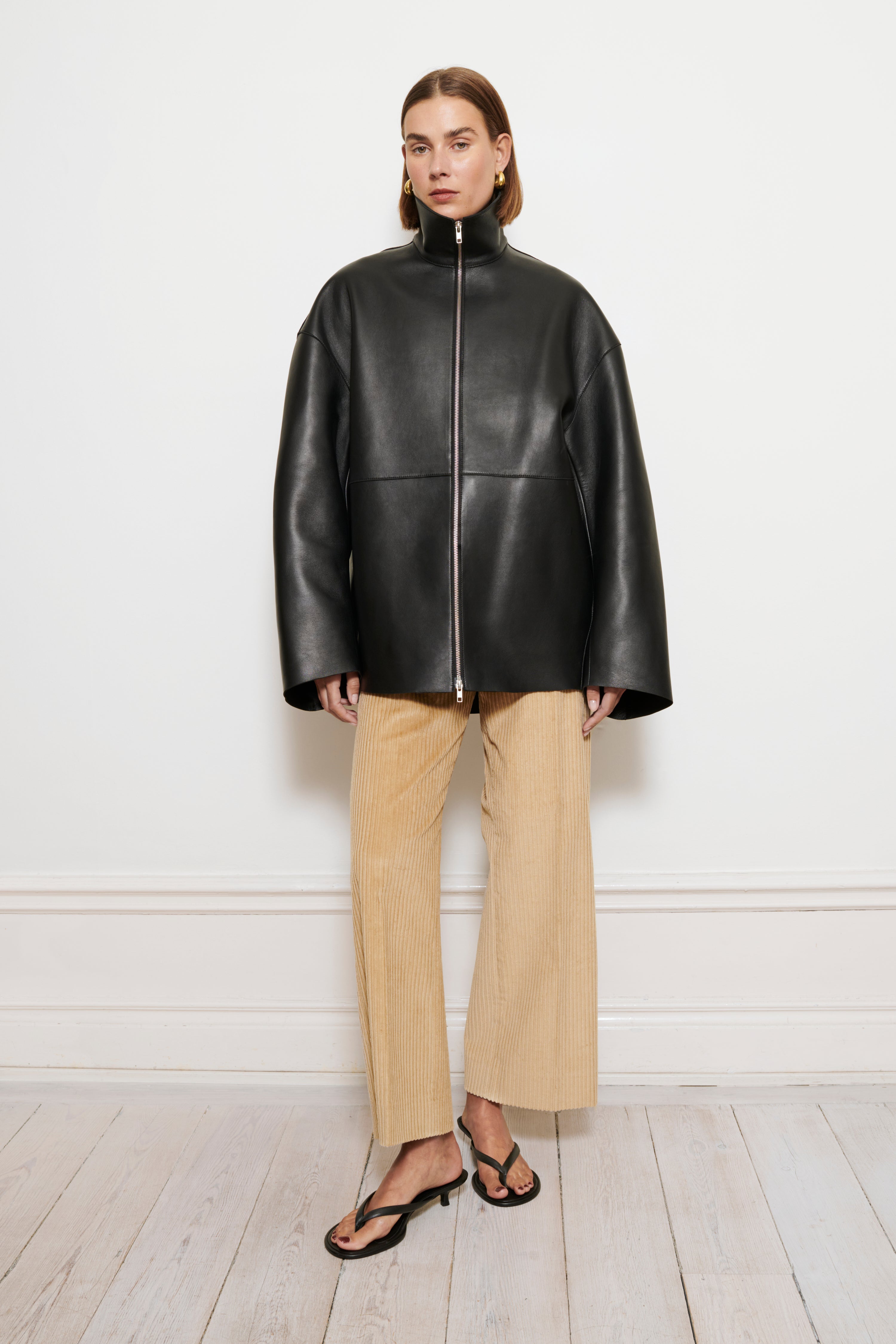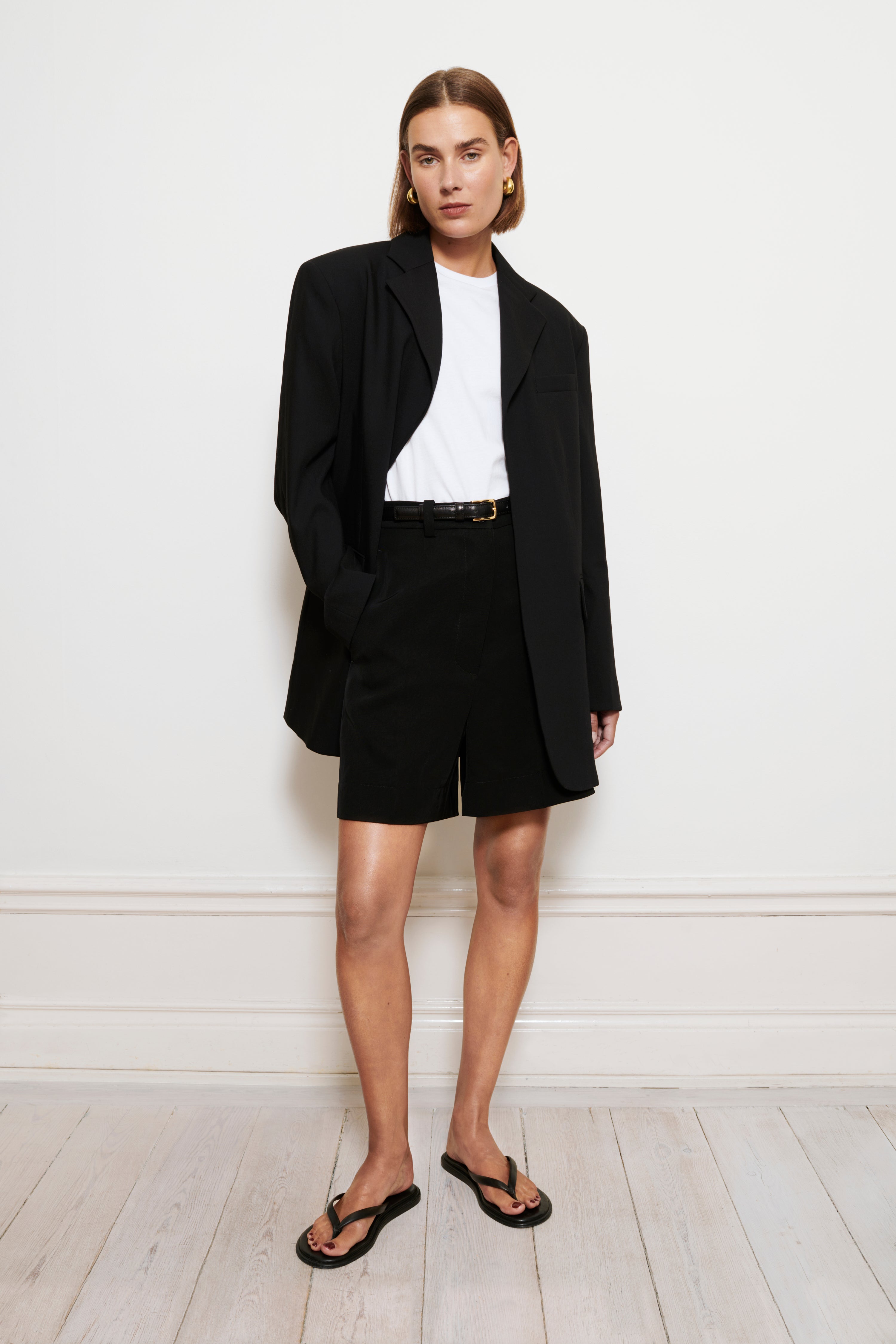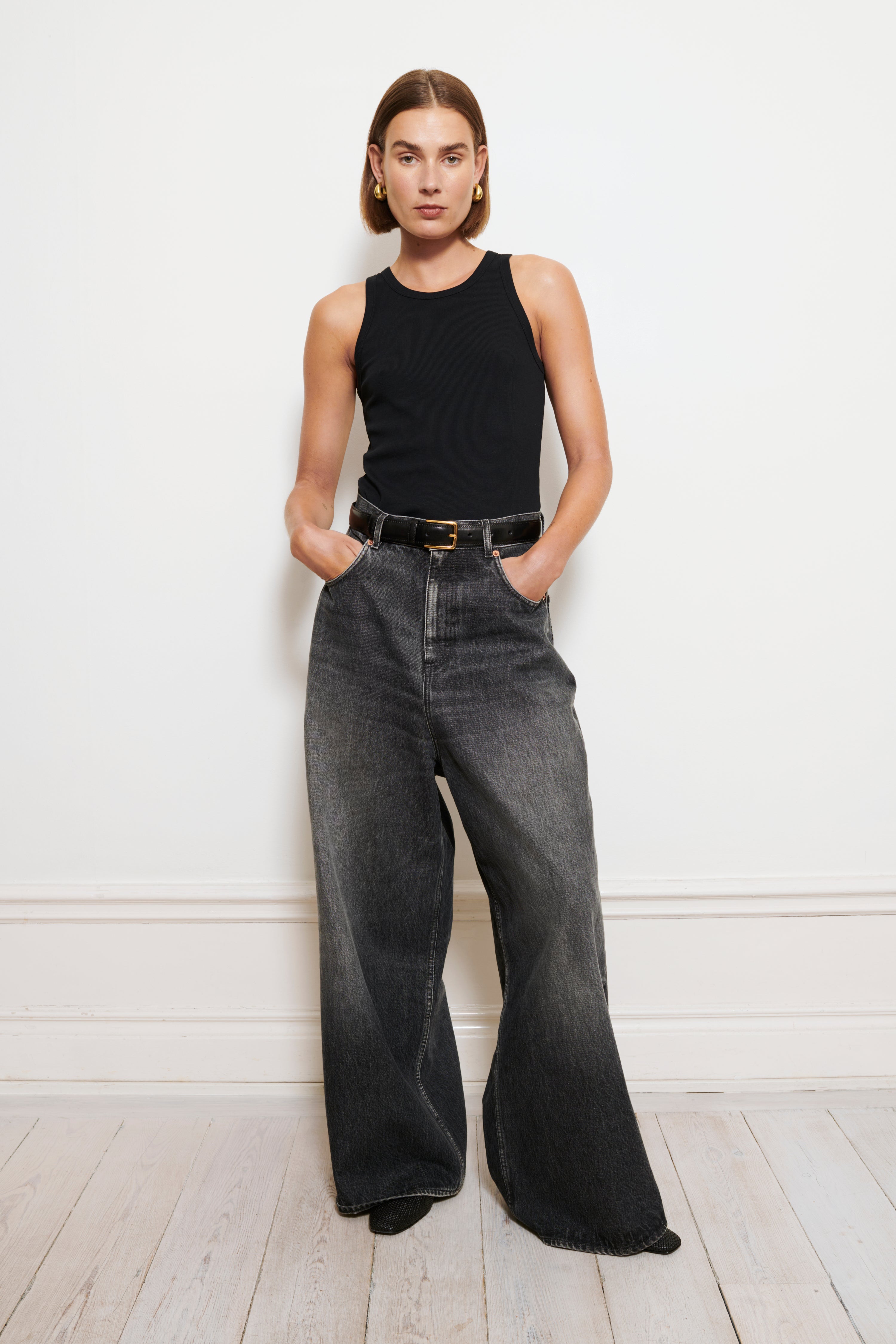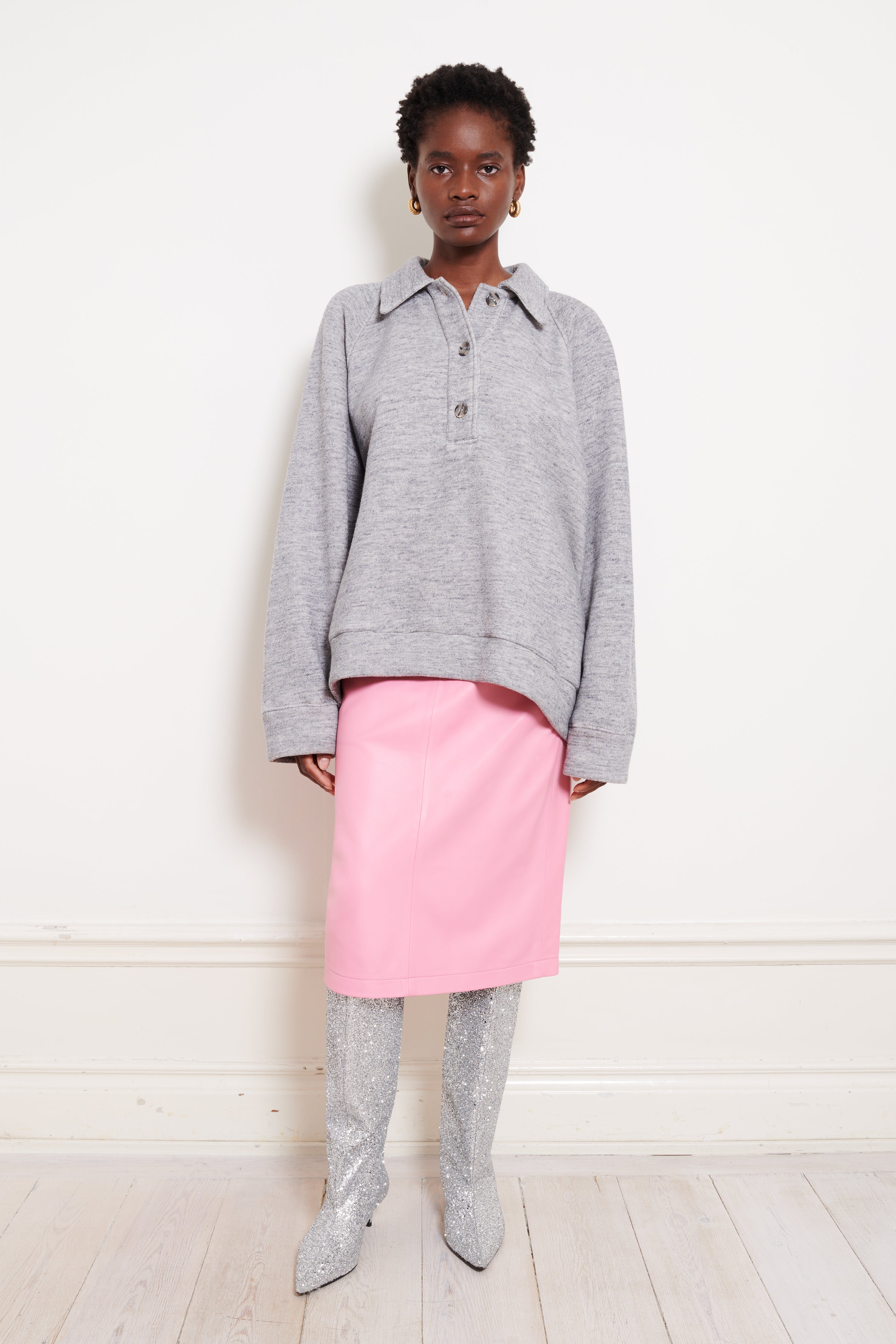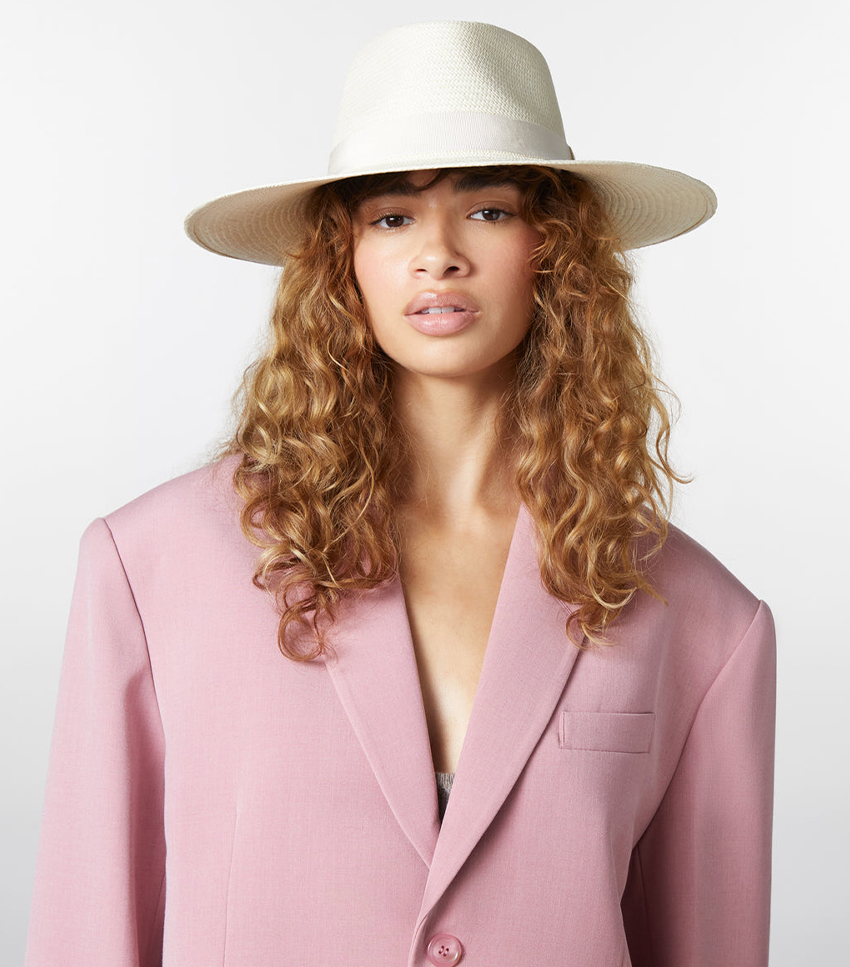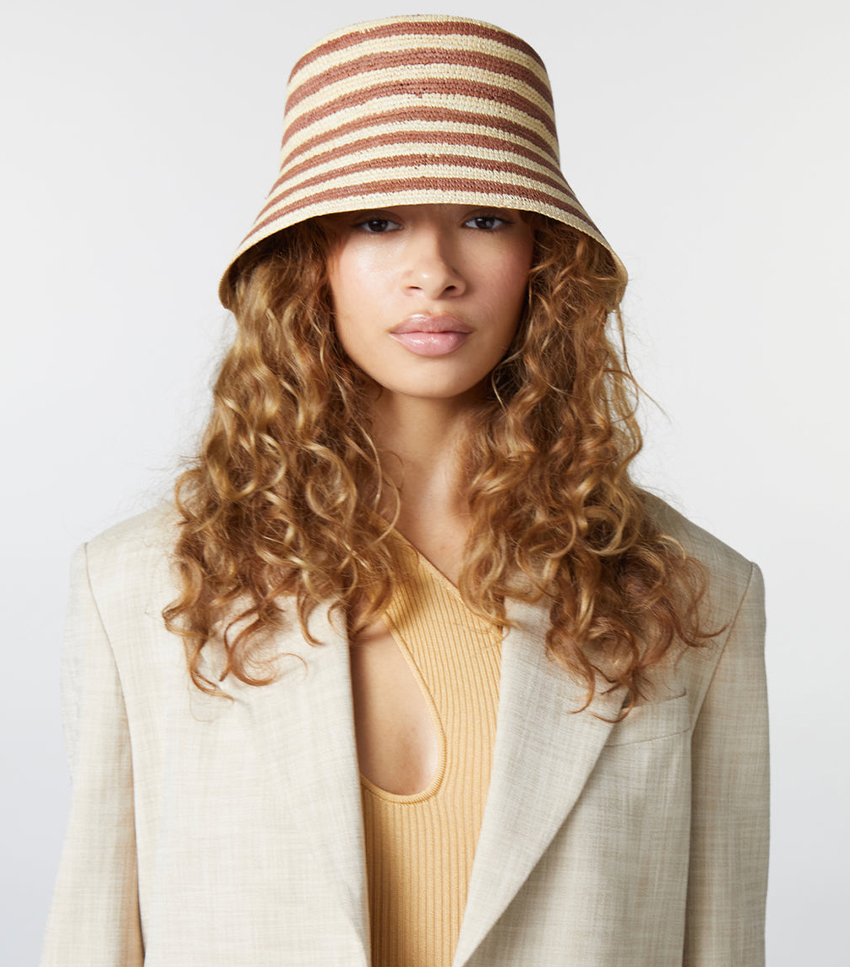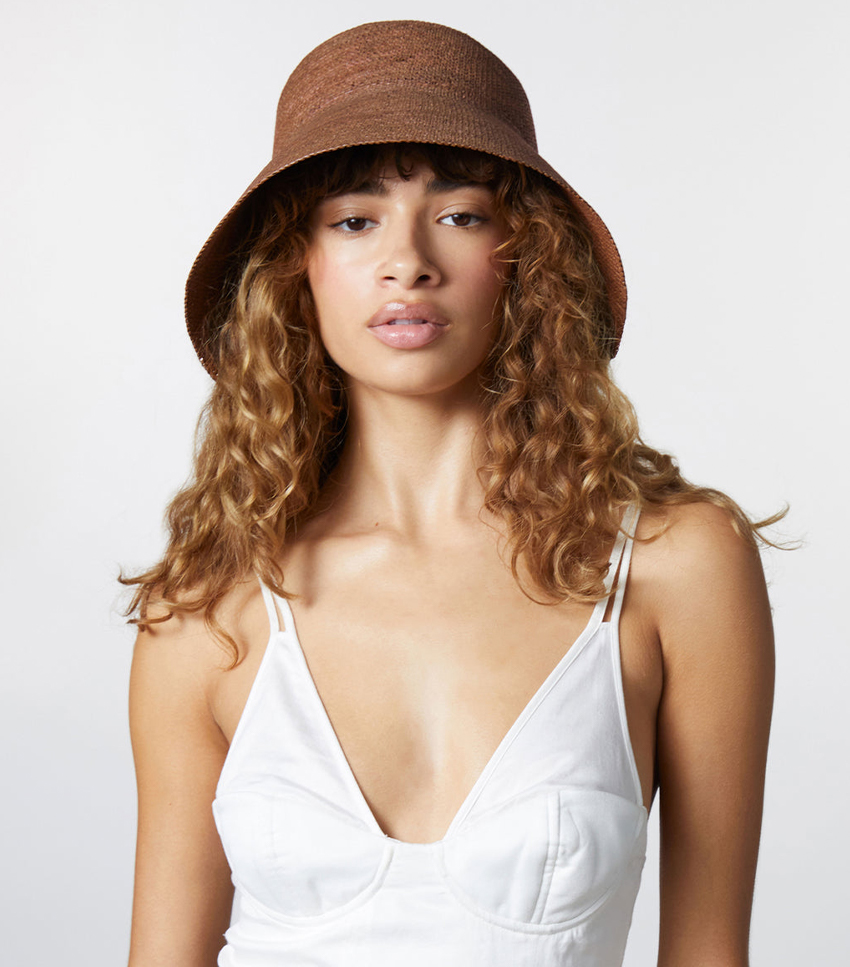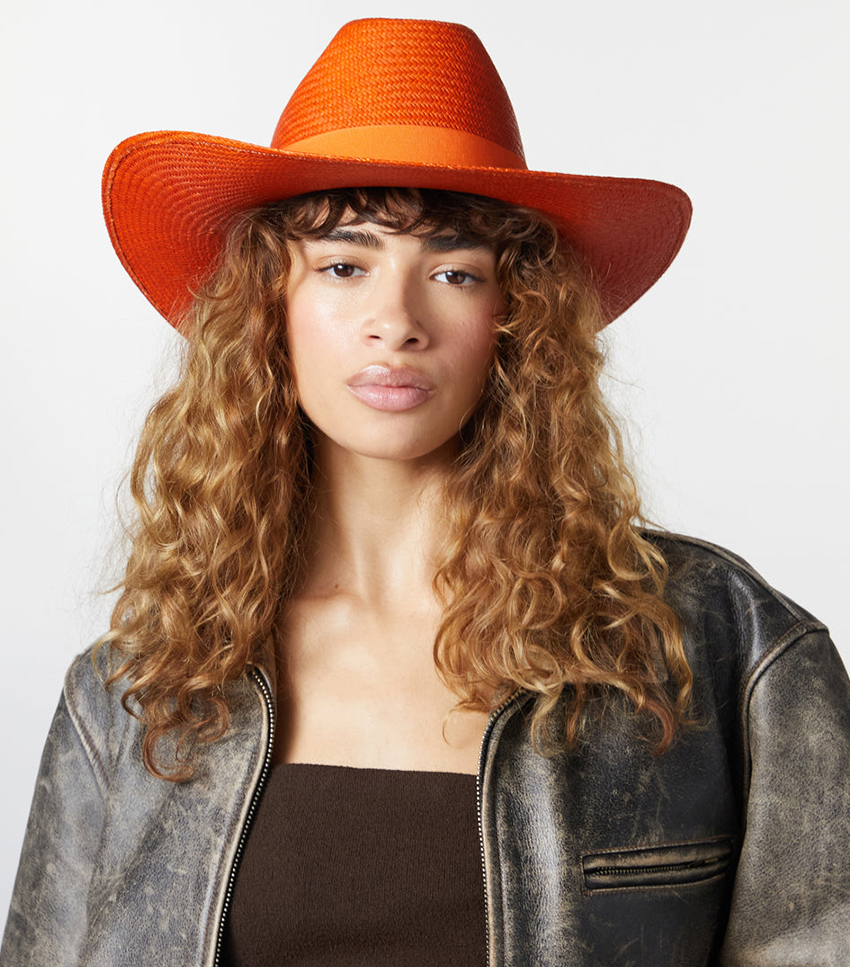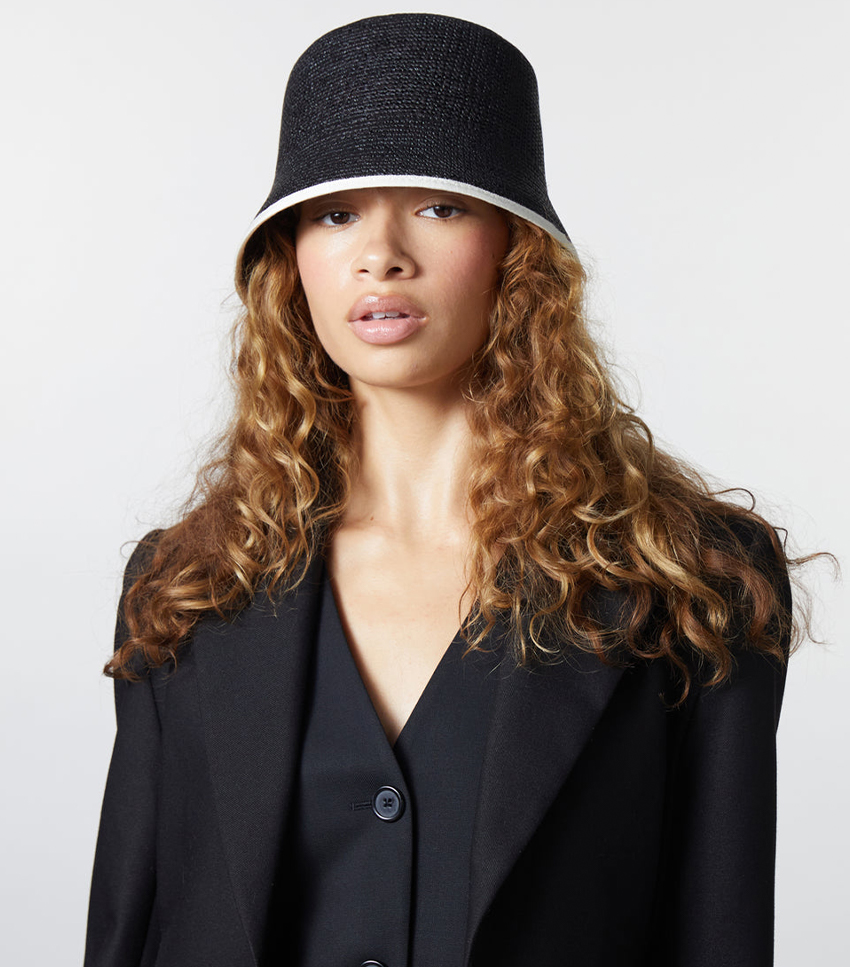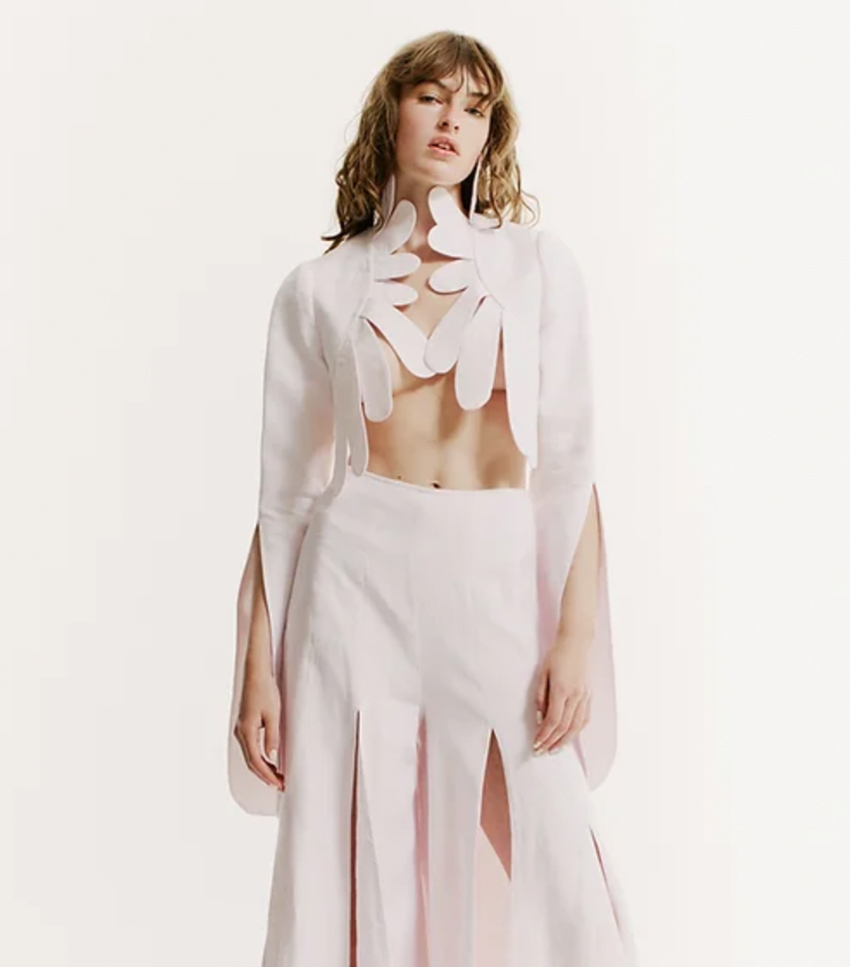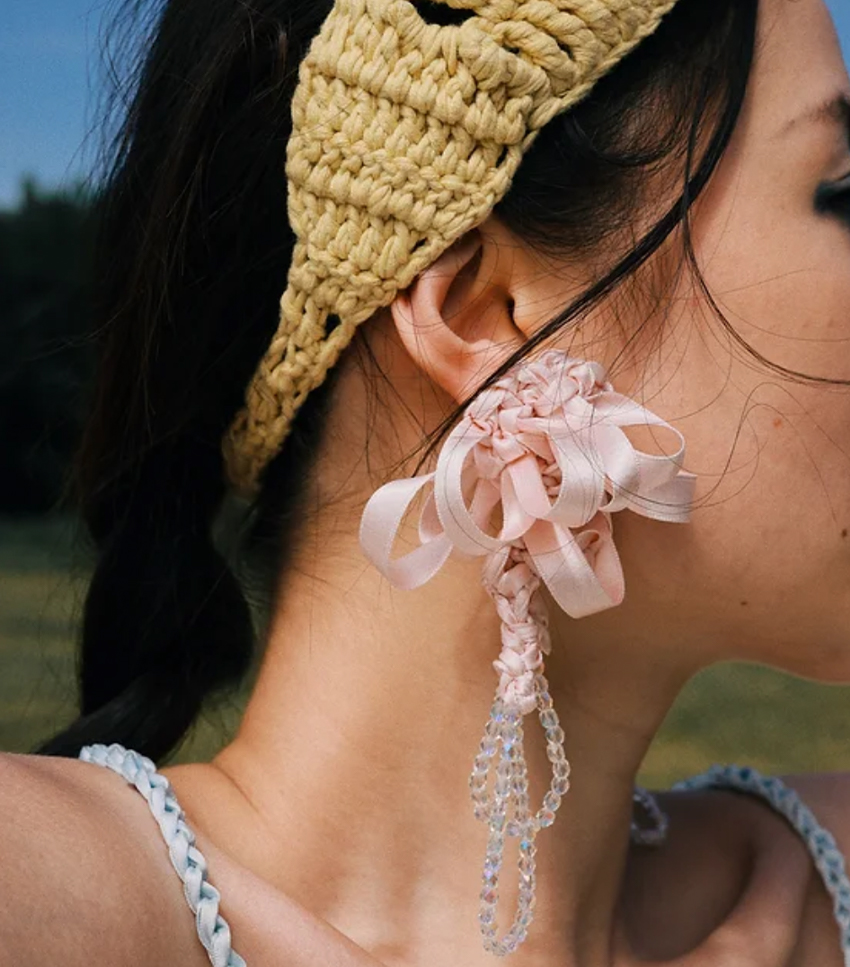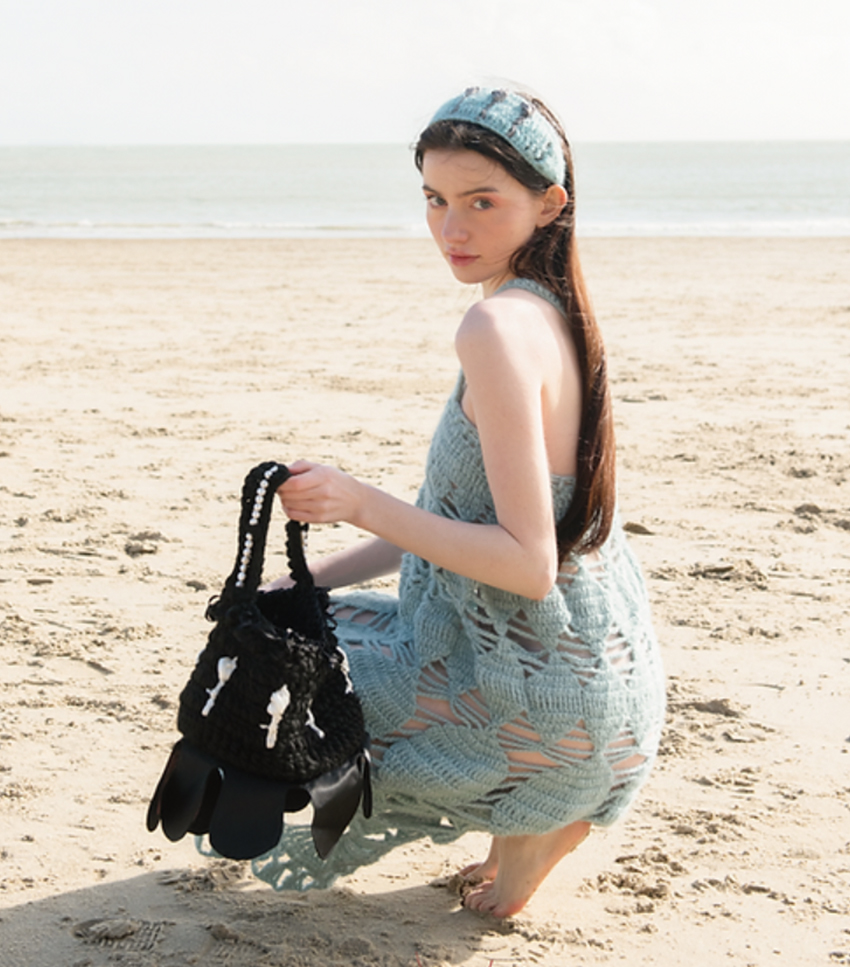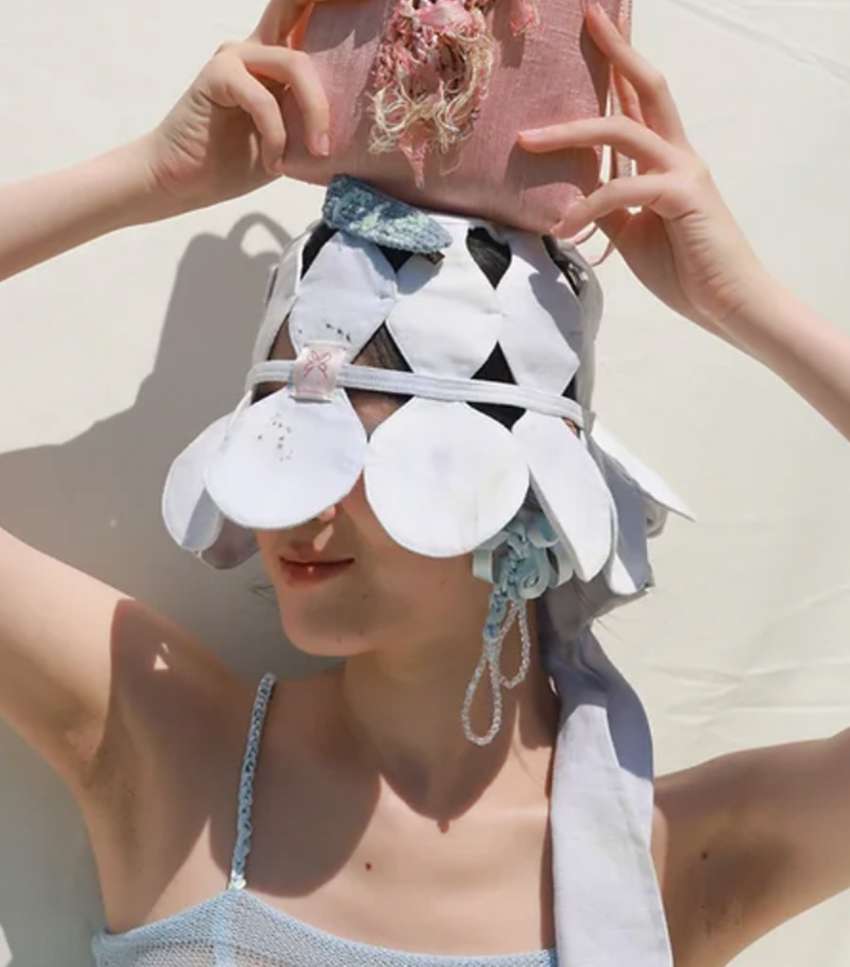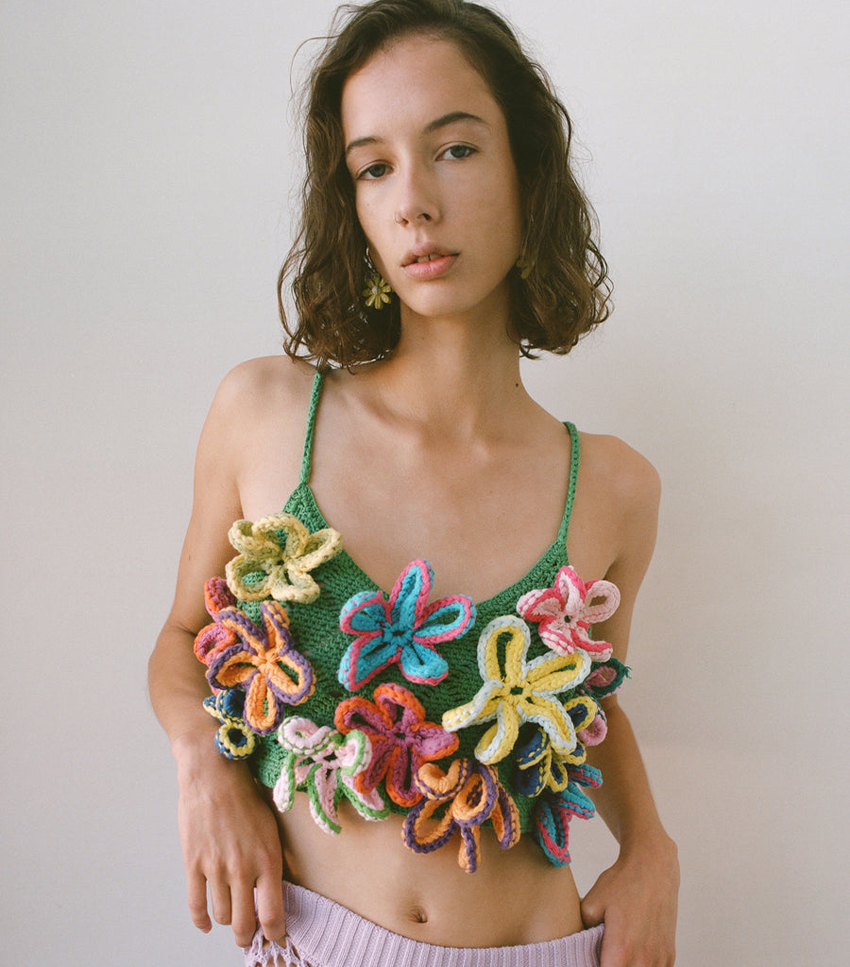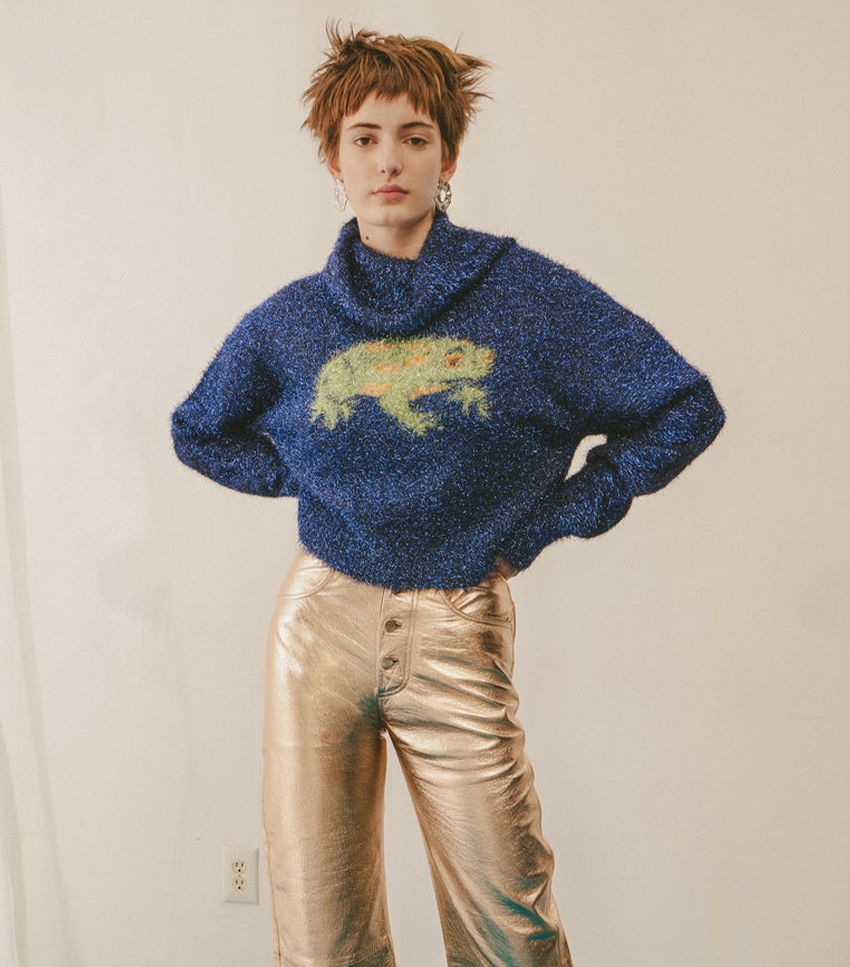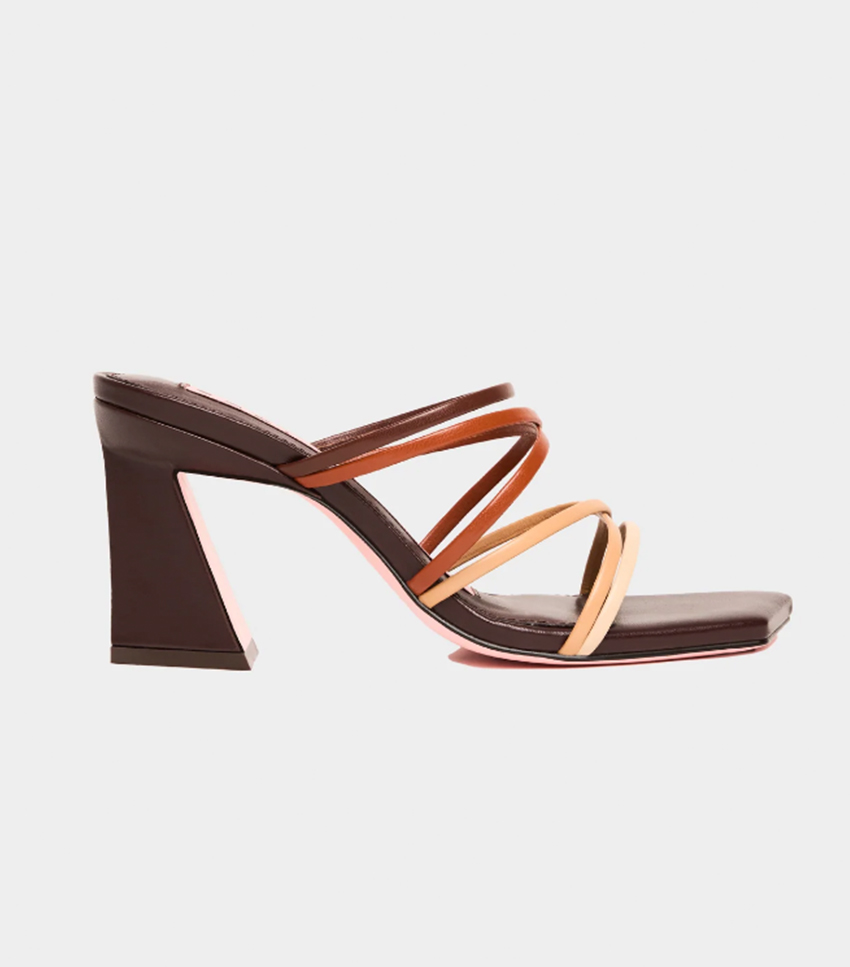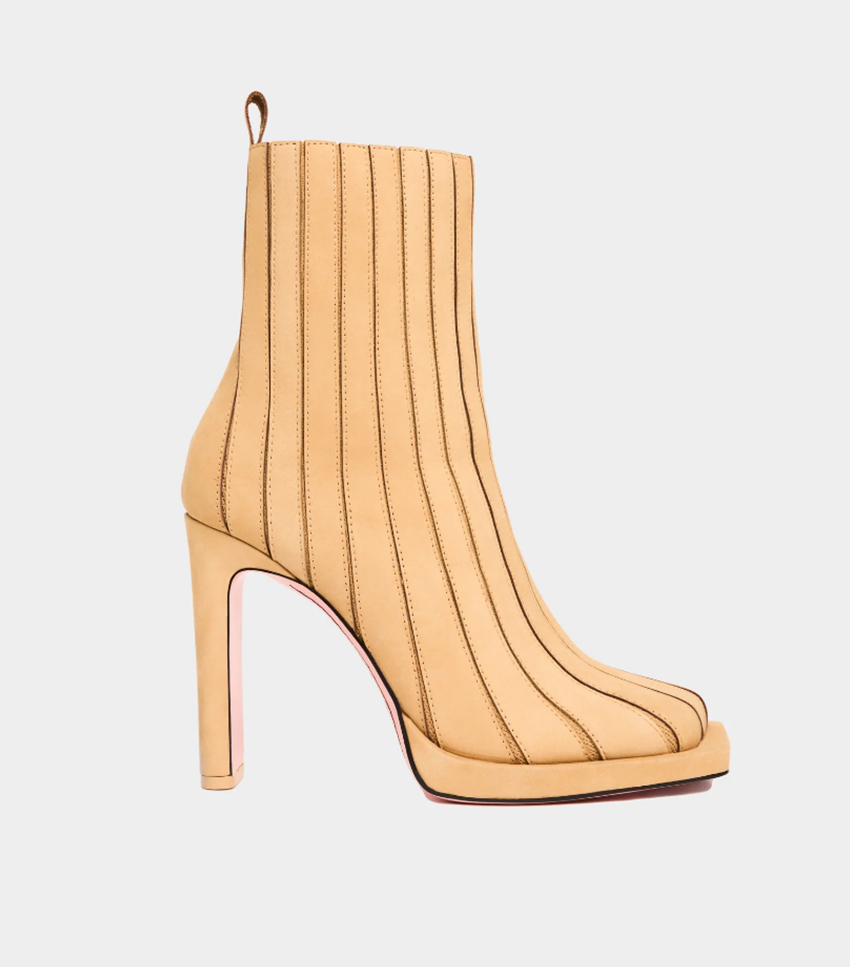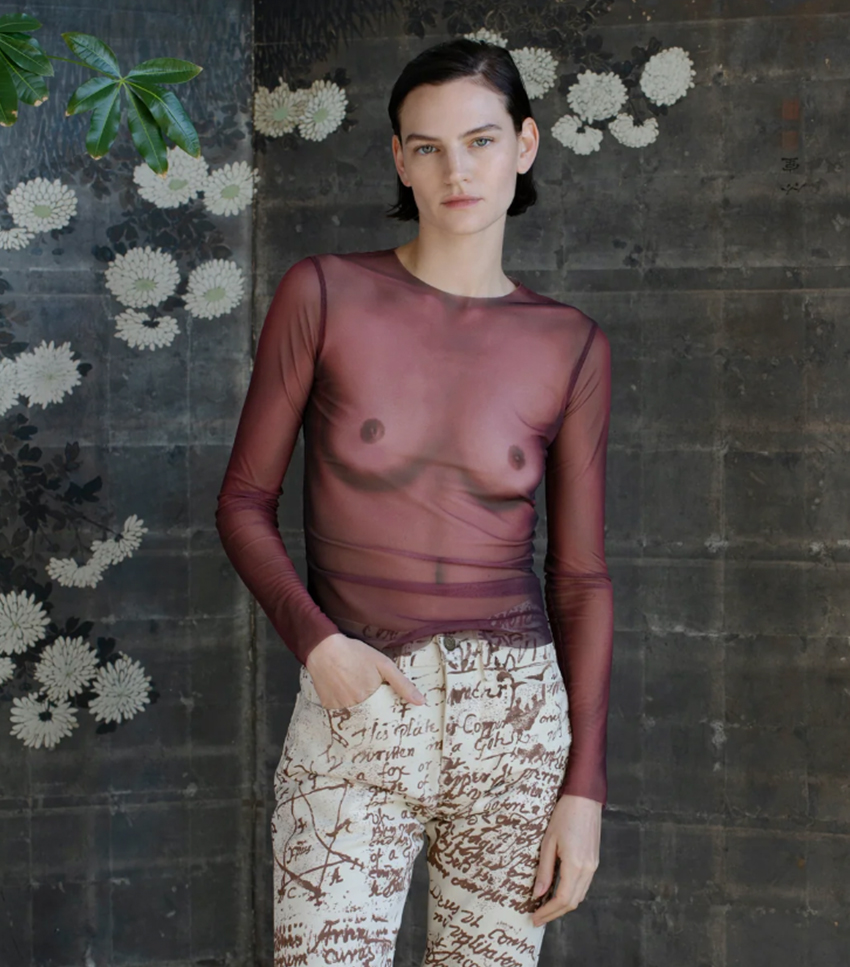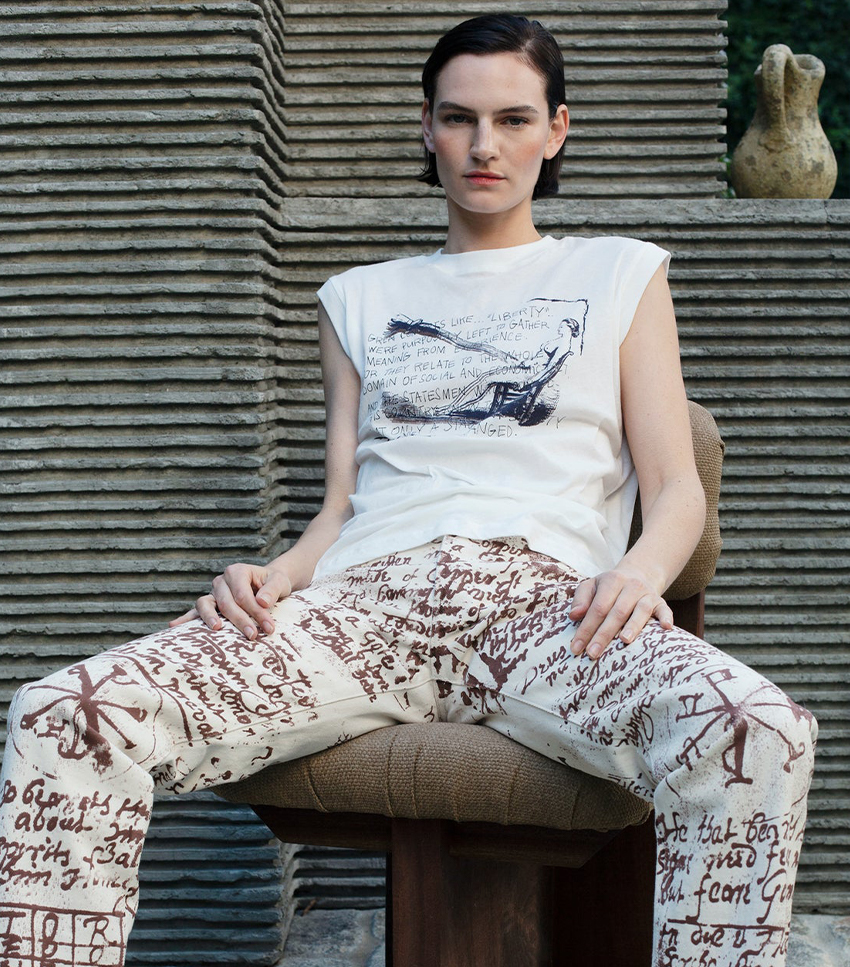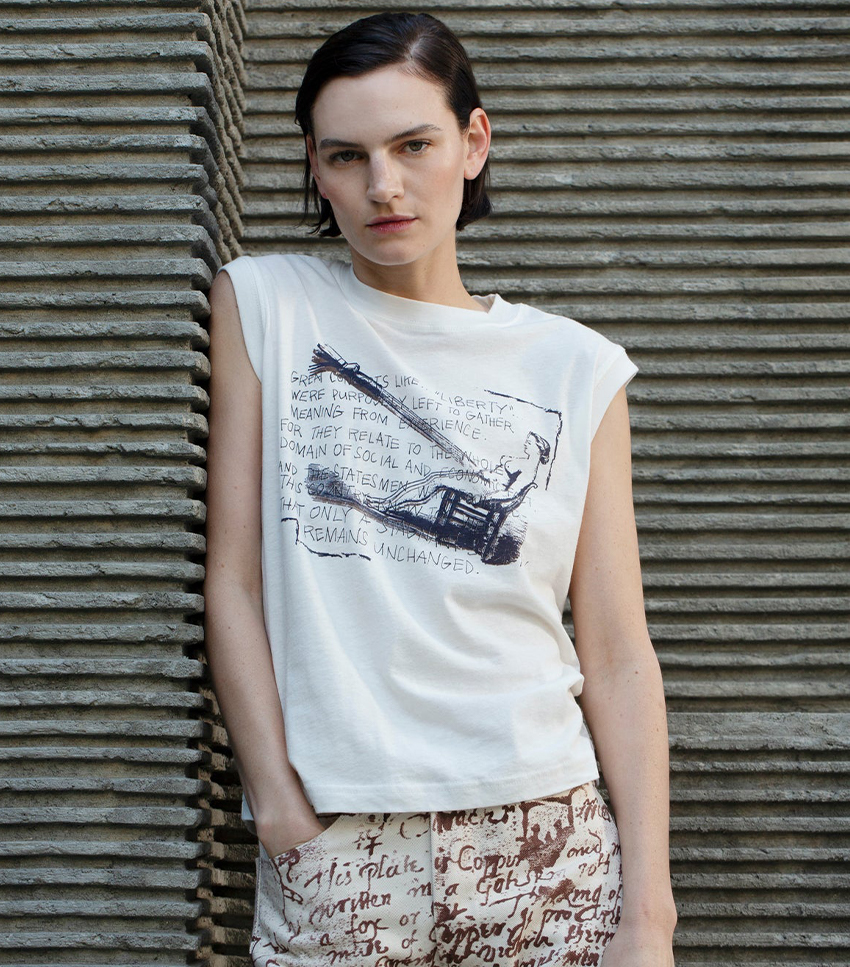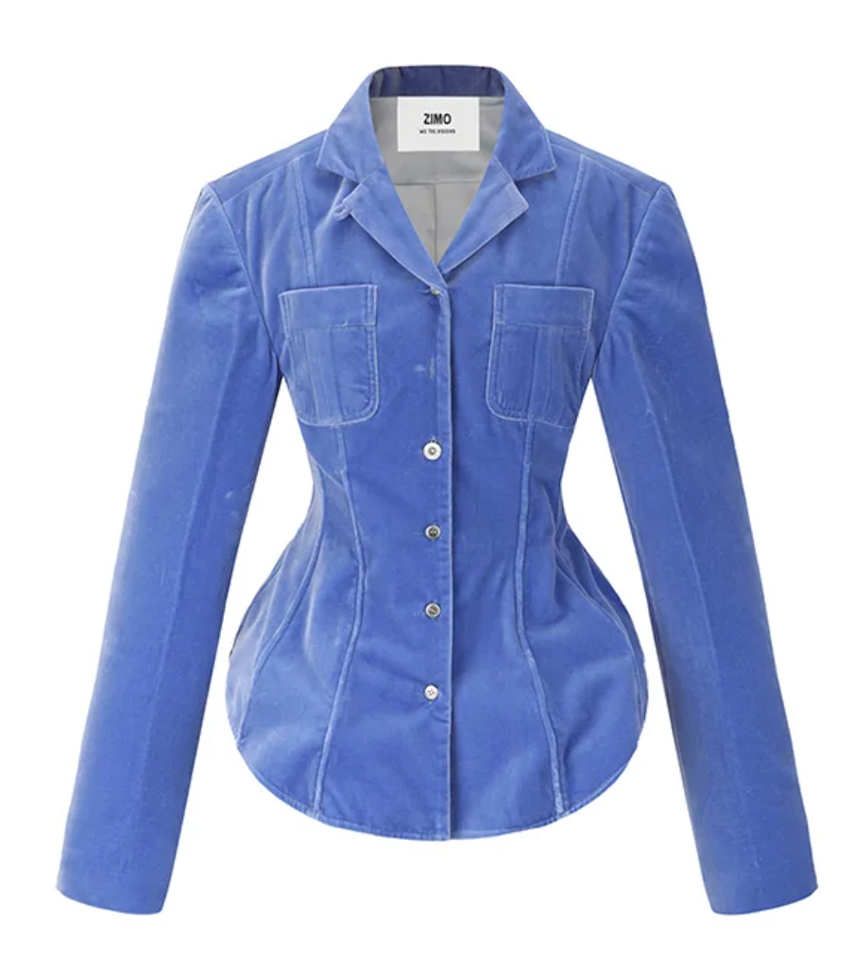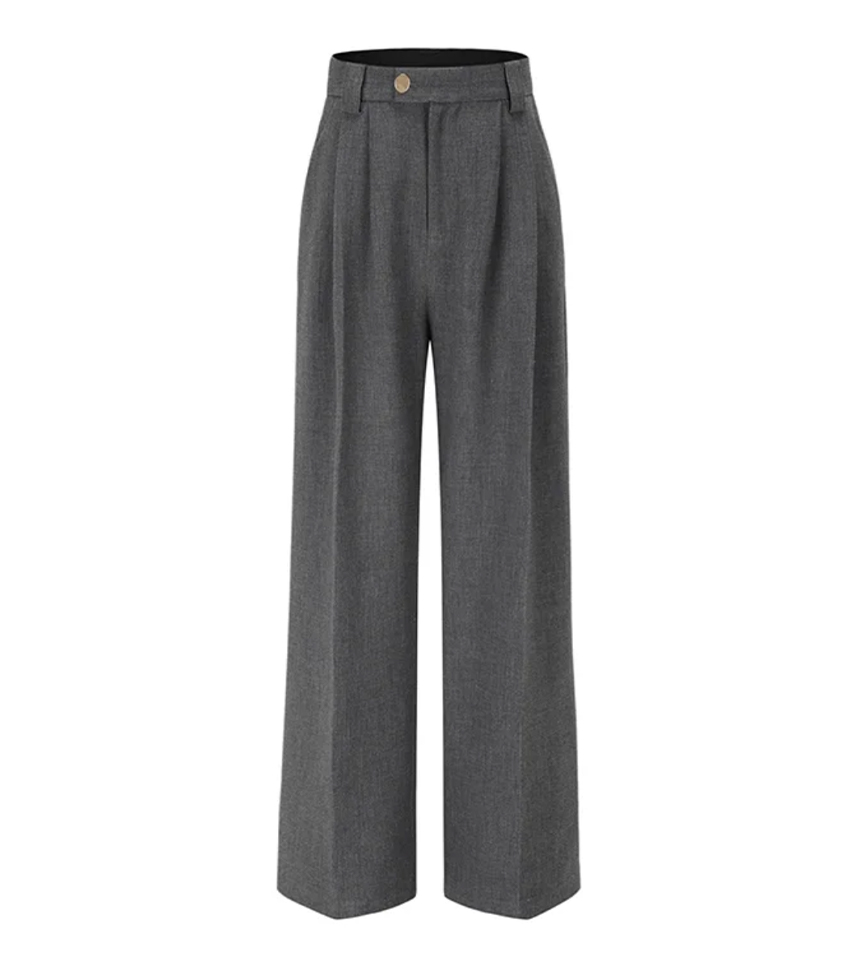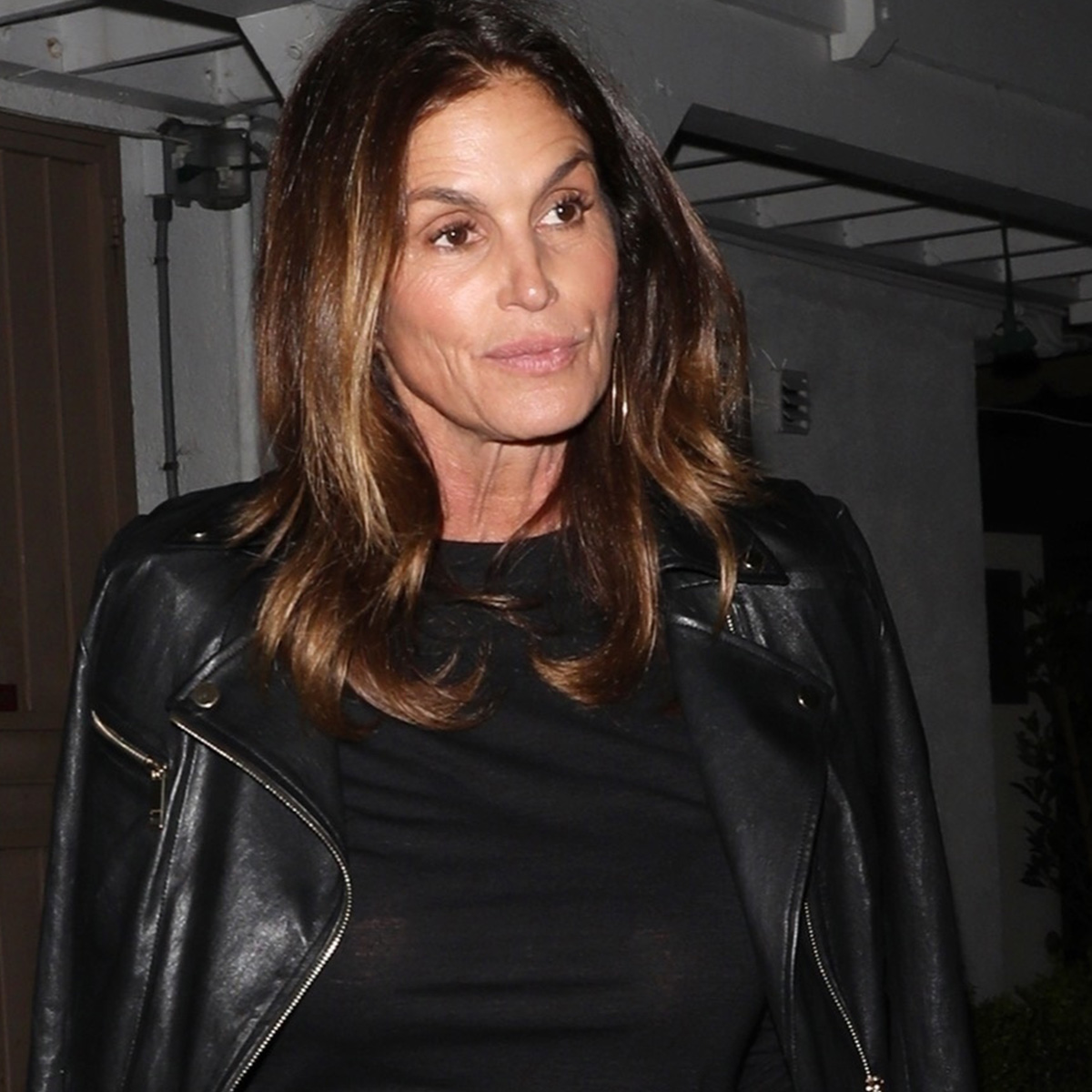New Year, New Talent—8 Designers to Watch This Year

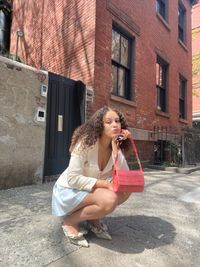
One of the best things in life is discovering something new, albeit through exploring a new city, trying a new restaurant, or binge-watching a buzzy show. But, for fashion people, it's a bit different. We, after all, live for the hunt; finding that perfect pair of jeans or vintage designer bag is a lifetime hobby. However, even for the most fashionable person, it can be overwhelming to think about just how much there is to find out there, still.
There's all of the knowledge that one can glean from historical archives (which is a lot). And then there's the ever-shifting array of "new" things to know about—whether that's a trend, a new it-item, or a rising brand. Add on top of this fact that the global apparel market generated over 1.53 trillion dollars in 2022 and saw a 4.9% increase in the number of fashion brands registered in the United States alone.
In short, keeping up with the industry can feel like a full-time job. Luckily for you, my entire career is dedicated to making that process easier. In an effort to cut out some of the noise, I did some digging to unearth eight fashion brands founded in the past three years that are worth your attention. The goal was to find designers that were not only starting their brands in an oversaturated industry but bringing something truly fresh to the table through their work. Ahead, you'll hear from each designer about the challenges of starting a label during a global pandemic, what whitespace they're hoping to fill in the market, and how they're hoping to change the industry.
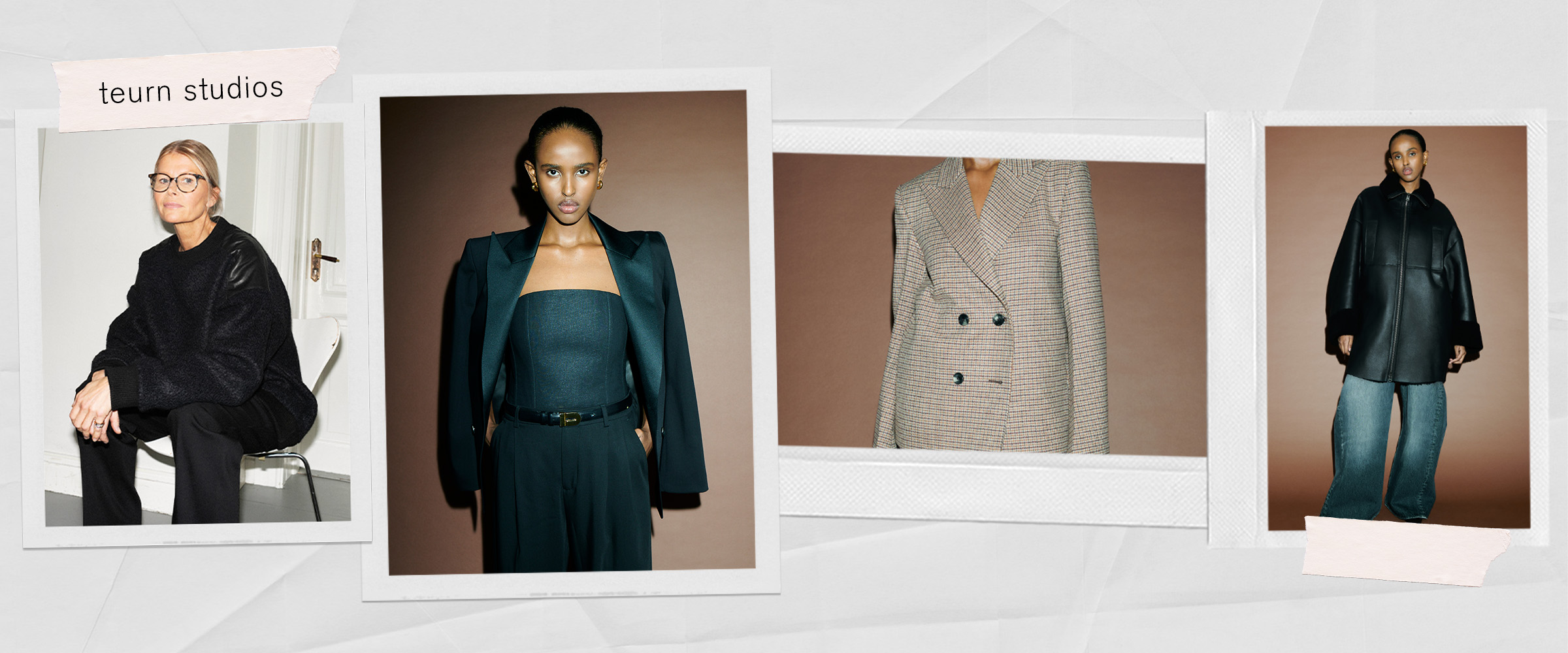
WHO: Anna Teurnell, Founder of Teurn Studios
For those who are unfamiliar with your work, how long have you been in the fashion industry?
I started as a teenager as a visual merchandiser, but I soon knew I wanted to be a designer. I went to art school, pattern constructing at school, and also studied at Beckmans College of Design to have a solid platform to stand on. After that, I spent six years at H&M as the head of the trend department, and then shortly after that, I was a part of founding a new brand within the H&M Group, & Other Stories. I was then headhunted to be Marimekko's creative director, and I held that role for more than three years until I went work at Arket for six years until founding my brand. So I've been in the industry for many years.
How did you realize that you wanted to start your label?
I needed to work differently, and I wanted to create a high-end brand with a strong DNA and uncompromised quality. I wanted to be able to work with people that I truly love to spend my time with and be able to work on creating our own distinct tone of voice. It is so rewarding to be part of creating a brand and going from idea to reality.
It's no secret that there are so many brands out there, but for you, what did you feel was missing in the market before you started your label? What do you hope to bring to the industry?
We bring very high-end ambitions when it comes to the look, craft, and quality, but at sensible pricing. We also try to bring a clear tone of voice, which is pared back, to the point, inclusive, and inspiring. Perhaps most important of all, we create the wardrobe we want to live in ourselves. There are indeed a lot of clothes out there, but in the end, we have struggled to find pieces that we truly love and want to use for years and years. Teurn Studios offers clothes that are easy to understand and that work for many moments of one's life—from morning to evening and everything in between. We believe that what we create should enable our clientele to move without friction in their busy lives.
One thing that makes your label so special is that it champions sustainability and circularity. For you, why was it imperative to create clothing that can outlast the trend cycle?
We always want to be working with both craft and sustainability in mind. This entails a lot of things. If we make clothes that last for a very long time, it is more sustainable. If we choose lower-impact materials (i.e., organic, recycled, certified), it is more sustainable. If we partner with the artisans and craftsmanship that we have in Europe rather than hunting for the cheapest labor, it is more sustainable.
You have spent years working in the fashion industry as a designer for various large brands. How have your collective experiences in the industry impacted how you approached every aspect of your business, from product design to marketing?
What stands out most clearly is that I can now create the wardrobe I have been longing for myself, a mix of elevated staples made from exceptional materials and with a distinct design.
So often, when consumers see the price tag of a luxury piece, they're turned off. How do you hope your brand shifts the way people think about buying clothing?
It is great to be working with suppliers and craftsmen and not have to compromise on quality. We may be sourcing leather from Italy, tailoring from Romania, and jersey fabric from Portugal to ensure each piece is the best it can possibly be. And while that may mean we charge a bit of a higher price, we must learn as consumers that creating something great comes at a cost.
The past few years have been tumultuous for many designers—from dealing with supply-chain issues to the pandemic. Did the instability of the market ever deter you from starting the label? And how, if at all, has it impacted your approach to your work?
It has been a bit stressful because when you start a brand and have a low quantity of pieces you're producing, the pieces you do buy from factories are at a higher price than when you can produce more. So out of the gate, we needed suppliers who believed in us and supported our vision. But I'm more convinced than ever that there's a gap in the market that needs to be filled with great products, and Teurn Studios is aiming to do just that.
You just released your fall/winter 2023 collection—can you tell us a little about it? Where did you draw inspiration from? How long did it take to develop it?
It has been an organic transformation of ideas we already worked with. We've kept wearability a central focus through our carryover products like tailored suits, knits, and great outerwear but used new fabrications and colors. And then, to add contrast, we incorporated colored leather pieces, baggy denim, and glitter shoes into the collection.
Lastly, though the brand is still new, how do you hope it will change the industry? What do you envision for the future of the brand?
We are by no means trying to transform the industry in a "technique" manner. We hope that Teurn Studios will contribute to more of a long-term wardrobe-investment philosophy among consumers. We hope we can help turn fashion less "fast," if you will, and that we can be part of moving forward by looking back to a time when craft, curation, and quality were the dictating aspects of any brand.
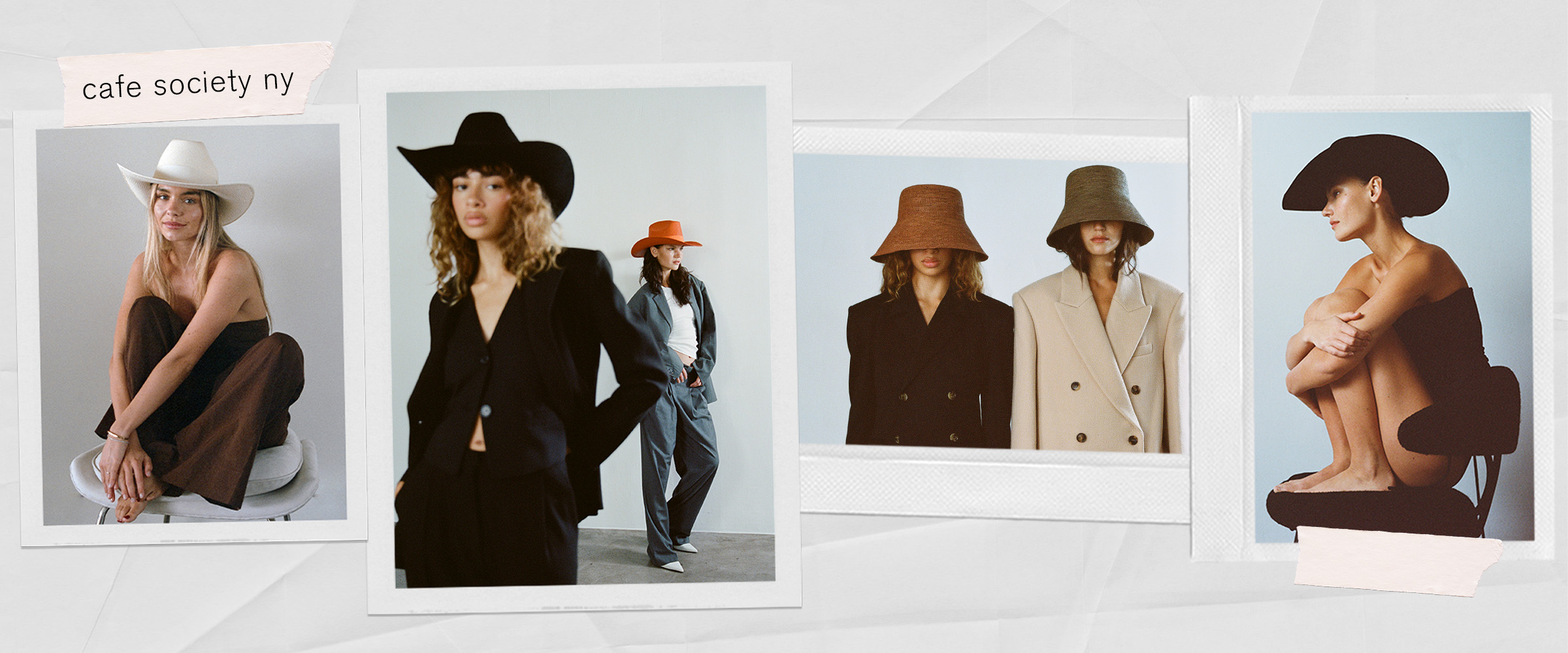
WHO: Lauren Burke, Founder of Cafe Society
For those who are unfamiliar with your work, how long have you been in the fashion industry?
I have been in the fashion industry for the last 10 years, working with various brands, from lifestyle to luxury. My most recent position before Cafe Society was with KCD, a global public relations firm specializing in media relations, production, digital, VIP services, and more. I was the associate digital manager at the New York office and managed digital campaigns, social media strategy, influencer relations, and consulting.
How did you realize that you wanted to start your label?
For as long as I can remember, I have wanted to have my own label. My father has been in the garment industry for over 45 years, so I grew up around the industry and continually spent my summer days with his designers practicing my sketches.
It's no secret that there are so many brands out there, but for you, what did you feel was missing in the market before you started your label? What do you hope to bring to the industry?
When exploring categories within the fashion industry that were true to my personality and style, I recognized a gap in the market for elevated yet attainable hats that were made with the utmost quality and detail. My goal with Cafe Society is for consumers to begin investing in pieces that are made to be durable and timeless.
One thing that makes Cafe Society so special is that each hat is handcrafted. For you, why was it imperative to champion a more sustainable way of producing hats?
The late Dame Vivienne Westwood has always been an inspiration to me, especially with her approach to fashion—buy less, choose well, and make it last. As the fashion industry has such a large effect on the environment, it was imperative that I used as many sustainable practices as possible when creating my hats. My goal is to create pieces that are made to last, allowing consumers to buy fewer better-quality items.
In choosing to produce hats, did you run into any initial challenges? And how did you overcome them?
As each hat is handcrafted by local artisans in Ecuador, my biggest challenge is the supply chain. Handwoven Panama hats have been a tradition in Ecuador for centuries, and unfortunately, the number of artisans left has decreased significantly. So things are taking much longer to produce, as there are only so many hands and so little time, but we've incorporated the slower pace of production into how we approach our collections.
You have spent years working in the fashion industry. How have your collective experiences impacted how you approach every aspect of your business, from product design to marketing?
I have been fortunate enough over the last 10 years to work in various roles within the industry, including digital, PR, marketing, and design. Through these opportunities, I have been able to gain a well-rounded approach to fashion, which has allowed me to understand branding and consumer sentiment.
What's one thing you think many consumers may not know about the hat industry that you're hoping to change through Cafe Society?
Similarly to what I stated above, I would love to educate consumers on the history of hat making and hat weaving in Ecuador and the sustainable nature of my business model.
The past few years have been tumultuous for many designers—from dealing with supply-chain issues to the pandemic. Did the instability of the market ever deter you from starting the label? And how, if at all, has it impacted your approach to your work?
Although it hasn't had a direct effect on the startup of Cafe Society, there is an ongoing effect on the supply chain that's impacting artisans worldwide. After the pandemic, the supply chain has been severely hindered, leading to inflation. After experiencing the effects of the pandemic on both the hat and fashion industries, my approach going forward is to be able to adapt to the new normal and be patient with growth.
You just released your inaugural collection—can you tell us a little about it? Where did you draw inspiration from? How long did it take to develop it?
I have been developing the idea of my first collection for a few years. However, after I left full-time employment, it took roughly one year for design and production. And for my debut collection, I wanted to tap into the same idea of creating a timeless wardrobe. Just as every closet needs those staple items (for me, it's the perfect black blazer, white tee, vintage denim, leather pant, and kitten heels), I wanted to create a hat collection that offers staple hats in neutral tones. Once my staple styles were created, I added those more "fun" items (e.g., our orange-toned cowboy hat) to make a well-rounded offering.
Lastly, though the brand is still new, how do you hope it will change the industry? What do you envision for the future of the brand?
Cafe Society aims to help people buy fewer but better-quality items to establish a timeless wardrobe. I have big plans for the future, but I don't want to give too much away just yet.

WHO: Qixin (Cici) Zhang, Founder of R.l.e.
For those who are unfamiliar with your work, how long have you been in the industry?
I completed my degree at the University of the Arts London and founded the label in November 2021.
How did you realize that you wanted to start your label?
During my time at university, I participated in many lectures speaking about sustainability today. I couldn't see who cares about sustainability and the action taken to support it although the discussions were productive. Sustainability has always played an essential role in my personal life. I drew inspiration from these places to create a label with a sustainable production chain instead of just using sustainable fabrics. It's about the root of the label. It's a way of life.
It's no secret that there are so many brands out there, but for you, what did you feel was missing in the market before you started your label? What do you hope to bring to the industry?
From my perspective, the fashion industry needed to reflect on the production line because I find many people think being sustainable is just using sustainable materials, but sustainability is more than that. I also felt that very few young people insisted on slow fashion and craftsmanship, and I wanted to bring the delicacy of craftsmanship and the understanding of sustainability into the industry so that more people could see that there was someone from the younger generation who insisted on it.
One thing that makes your label so special is that you champion sustainability throughout the production process. Can you tell us a little bit about how you make sure each collection is truly sustainable?
At R.l.e, [we] not only use ethical and natural fabrics but also create an environment for sustainability within our studio by setting up a few different recycling bins to collect waste calicos, pattern papers, and fabrics. The cut-off pattern paper will be remade into brand labels and packaging. The cut-piece fabrics will be remade into 3D yarns to make bags and accessories. Some of the waste calicos will be used for the next round of toile making, and some will also be made into 3D yarns for later experiments. The most important thing is to find a way of reusing everything, and we are still exploring and developing more techniques to reuse and remake the waste.
You actually used to work as a florist in London. What made you decide you wanted to pivot into fashion design, and how have your collective experiences in the industry impacted how you approach every aspect of your business, from product design to marketing?
Yes, and I am actually still a freelance florist now. Working with flowers always brings me new inspirations and ideas. Working with people from different industries is always a great way to learn something new and see things from a different perspective. It helps me think in different ways, for example, balancing creativity and practicality from both the consumer's and designer's points of view.
How do you hope your brand shifts how the industry defines sustainable fashion?
The industry's definition of sustainability will change over time. I hope that R.l.e's presence will impact people to be more aware of the importance of craftsmanship and how a lack of it is the root of environmental problems. Sustainability is not just about materials innovation and eco-production processes. It is also about creating pieces that will last longer.
The past few years have been tumultuous for many designers—from dealing with supply-chain issues to the pandemic. Did the instability of the market ever deter you from starting the label? And how, if at all, has it impacted your approach to your work?
The last two years have, undoubtedly, been hard on every industry, and while it may sound challenging and irrational to create a brand in these difficult times, it may also be an opportunity, especially as consumer behavior has changed dramatically in the last two years. We all take sustainability more seriously. The industry's instability has certainly caused a difficult start, but it has also given the brand experience in dealing with bad situations.
You just released your fall/winter 2023 collection—can you tell us a little bit about it? Where did you draw inspiration from? How long did it take to develop it?
The collection continues the journey of discovering one's inner world: What is the sense of security we are ultimately looking for in our hearts? This question is the overriding inspiration behind the collection. We will also be releasing our first knitwear design pieces. More care and attention have been paid to ethical yarn and fabric selection as well. It's already been four months since my team and I began to develop the initial idea. It took a lot of time to develop the patterns or toiles before it was finally ready to present.
Lastly, though the brand is still new, how do you hope it will change the industry? What do you envision for the future of the brand?
The brand has just started, but I hope that, at this stage, R.l.e's approach to sustainability, slow fashion, and craftsmanship can somehow influence some young people to think about the future of the fashion industry and encourage the designers who share the same vision as us and stick to it. As young designers, we are responsible for contributing to sustainable development and preserving craftsmanship.

WHO: Colin LoCascio, Founder of Colin LoCascio
For those who are unfamiliar with your work, how long have you been in the fashion industry?
I graduated from the Rhode Island School of Design in 2015 and have worked in the industry since my sophomore year of college. I've worked at brands like Elizabeth and James, Marc Jacobs, Adam Selman, Kendall + Kylie, etc. I decided to launch my namesake brand in 2020.
How did you realize that you wanted to start your label?
It was a very gradual approach. After graduating, many stylists and celebrities pulled my thesis collection, and I started a made-to-order business. I was making custom pieces for stars, and after doing that for four years, I wanted to launch a full collection with various product ranges (sweaters, denim, leather, etc.). I felt I had more to say as a designer than just making one item for a particular event. At that time, I had been working as the design director of Kendall + Kylie for almost two years, so I felt that I understood the business, production, and technical aspects of a clothing brand, where I would launch the brand and have some knowledge about trying to run it properly.
It's no secret that there are so many brands out there, but for you, what did you feel was missing in the market before you started your label? What do you hope to bring to the industry?
As I was working with celebrities, I would get so many emails about if we had those items in stock, so I felt that I had been acquiring customers for over four years. When I finally launched, it was exciting because I had been building our customer base for a while.
One thing that makes your label so special is that it began on a made-to-order model. For you, why was it imperative to create clothing at a slower, more intentional speed?
I think it was the best thing for me. It all happened very organically and naturally! Starting small and at a slower pace allowed me to learn about all aspects of the process, and I had the time and the space to really manage and deliver great items. Made-to-order is a tough business because you very rarely have more than a few days to make very complicated and complex styles. I also worked with many different fabrics and styles that I would probably not gravitate toward on my own, so it was an amazing education on achieving different constructions specific to fabric (e.g., what's the best way to finish this garment versus that fabric).
You have spent years working in the fashion industry for various labels. How have your collective experiences in the industry impacted how you approach every aspect of your business, from product design to marketing?
I think in every way, honestly! I have had a fantastic career and have gotten to work at a variety of companies. I always try to be a sponge in all workplaces, and I've learned so much from fellow co-workers, especially in other departments (sales, PR, marketing, production, technical design, etc.). I bring all of that knowledge into the brand.
You've created pieces for numerous celebrities, including Bella Hadid, Paris Hilton, Keke Palmer, and Cardi B. As a newer designer, what has it been like to see some of the biggest stars in your pieces?
It's been super surreal, and it never gets old. Whenever I see someone in one of my pieces (a celebrity or a customer) on the street, it's always a magical feeling. I think, on a personal note, it's really inspirational to see such iconic women in my clothing. I really love what they all stand for, so it is truly an honor to have them in my clothes.
The past few years have been tumultuous for many designers—from dealing with supply-chain issues to the pandemic. Did the instability of the market ever deter you from starting the label? And how, if at all, has it impacted your approach to your work?
It has impacted our wholesale opportunities more than the supply chain. I think many buyers and stores are more conservative with adding new young designers into the mix. I'm hoping over the coming years it will get better.
You just released your fall/winter 2023 collection—can you tell us a little about it? Where did you draw inspiration from?
The collection reflects many of my favorite childhood memories, particularly with my grandmother, Frances. I drew inspiration from my memories of catching fireflies, carousel rides, and trips to the botanical gardens. It's a whimsical and joyful collection all around.
Lastly, though the brand is still new, how do you hope it will change the industry? What do you envision for the future of the brand?
I hope it inspires people to be more confident and play with color and texture!
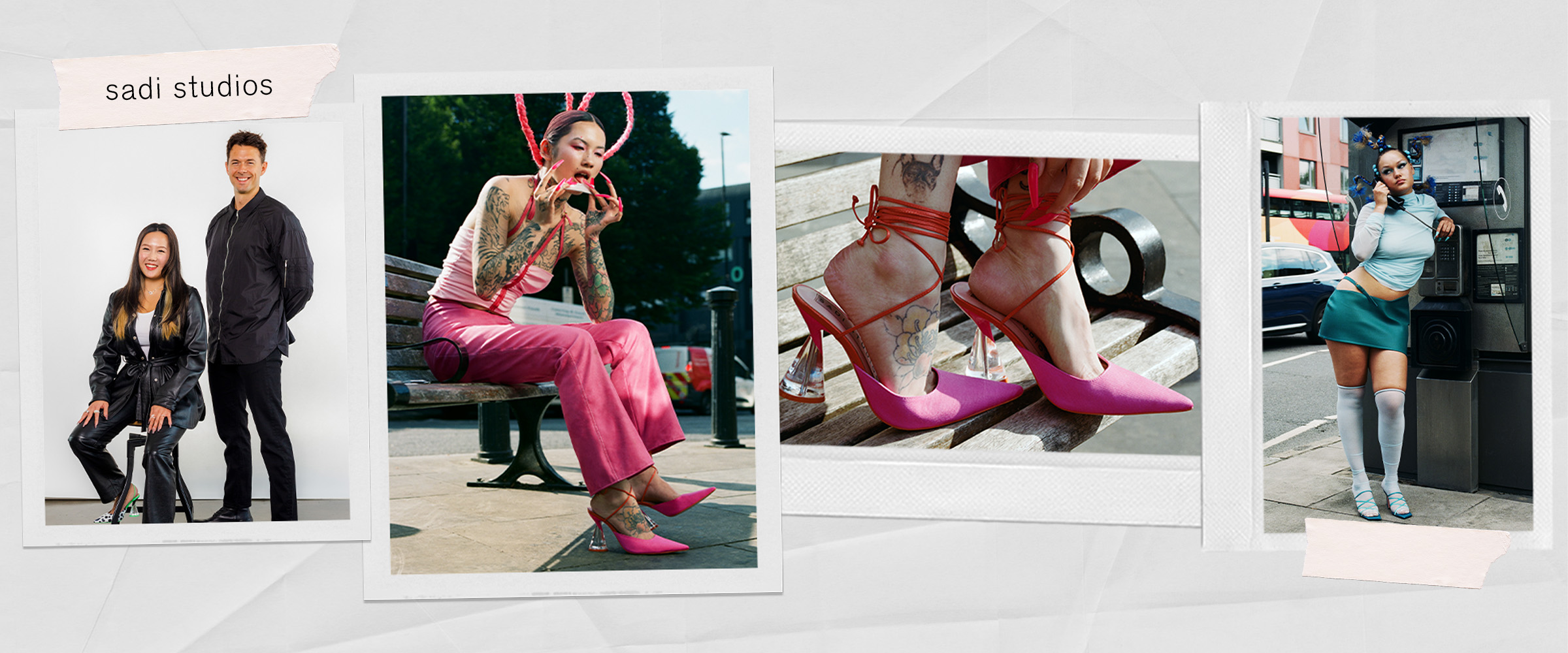
WHO: Soyeon "Sarah" Ahn-Ianni and Dom Ianni, Co-Founders of Sadi Studios
For those who are unfamiliar with your work, how long have you been in the fashion industry?
Sarah Ahn-Ianni: We launched Sadi Studios on November 11, 2022, so it's been over three months. But we've been designing and producing footwear for over 10 years. Dom even worked in retail stores starting at age 16, so we've been around shoes for a long time.
How did you realize that you wanted to start your label?
SA: Growing up, I always loved looking at catwalks and reading fashion magazines. I had dreamt of having my brand, not knowing what that looked like exactly. When I started working for other brands and suppliers, I would always question, What would I do if this was my brand? How would I do things differently? What could I build? Then in 2019, I convinced myself that I was ready to explore and start Sadi Studios.
Dom Ianni: It was an idea that started building in my mind as I started working through jobs in the industry, but I never had that light-bulb moment or a vision of what the brand would look like. After meeting Sarah and seeing how creative she was and her design process, I knew that designing a brand was something in her future. And I knew I should be in a supporting role to make that a reality. Once we became partners, combining our abilities to create a brand that supported our ideas made sense.
It's no secret that there are so many brands out there, but for you, what did you feel was missing in the market before you started your label? What do you hope to bring to the footwear industry?
SA: What I felt missing was more or less a combination of everything I wanted in a brand—something playful with unique designs made with quality materials at premium price points that had an inclusive size range.
One thing that makes Sadi Studios so unique is that it champions size and gender inclusivity. Why was it imperative to create a footwear brand offering a sizing range from 5 to 16?
SA: Ultimately, it was because we felt it should be easy for everyone to access any shoe choice in their size. Clothes have become more size-inclusive, but there hasn't been much change to the traditional sizing in footwear—I felt like that had to change.
In choosing to produce a footwear brand that's nonbinary, did you run into any initial challenges? And how did you overcome them?
SA: Traditional footwear sizing is systemically gendered, as it is based on the shape and size of men's and women's feet. The challenge was to ensure our shoe sizes fit right on every person regardless of their size or gender. To do this, we worked with a few different fitting models—all different sizes and gender. We are still learning and keen to improve, of course, but we've received great feedback from customers on the fit.
DI: We also had to perfect the fit, so more sizes meant more trials and tweaking. I wouldn't say there is a way to overcome the cost of doing this, but there are ways to manage. For example, our first collection shares construction across a few styles. We have a sneaker in waiting, but we need to build a customer base to launch that. As far as fit goes, a lot of time, effort, and samples are shipped worldwide.
You have spent years working in the footwear industry. How have your collective experiences impacted how you approach every aspect of your business, from product design to marketing?
SA: We really lucked out because Dom and I have entirely opposite experiences in the industry. He is more into logistics, production, and sales, where I've always been in the design and creative aspects of the business. With the different skill sets and learnings from our journey, we've helped each other make the best decision possible at every opportunity. We often joke that, without one another, we are unsure if we would have made it this far!
What's one thing you think many consumers may not know about the footwear industry that you're hoping to change through Sadi Studios?
SA: We want to normalize our size range as the industry standard. Many do not know how to add and create a shoe size (small or large). You have to make a last (a shoe mold carved from wood or plastic, which emulates a real foot to give the shoe its shape), which can quickly become costly, hence why many companies are opposed to it. If we can show an appetite for our size range, this will hopefully push other companies and brands to offer the same.
The past few years have been tumultuous for many designers—from dealing with supply-chain issues to the pandemic. Did the instability of the market ever deter you from starting the label? And how, if at all, has it impacted your approach to your work?
DI: I think there were moments when we wondered if this was even possible. Pushing through those moments and ultimately making Sadi Studios a reality made us stronger, and I think it's helping us as we go through this journey of building our brand. Now we are approaching everything with this confident enthusiasm gained through that experience.
You just released your inaugural collection—can you tell us a little about it? Where did you draw inspiration from? How long did it take to develop it?
SA: I consider this the "essentials" collection, as it features six styles. The focal point was to have pairs that I personally needed and wanted to wear: daily lug boots, a pump, an ankle-wrap cage sandal, a barely-there sandal, and, most importantly, a heeled ankle boot. A lot of designs are a reflection of my heritage, experiences, and nostalgia. I try to modernize and apply some fun to it. For instance, there are traditional rubber Korean shoe elements in our Goon and Gabi outsoles, while my favorite anime of all time, Sailor Moon, was the muse for styles Bam and Jin. Overall, this collection took two years to develop, but you won't have to wait long for a new drop.
Lastly, though the brand is still new, how do you hope it will change the industry? What do you envision for the future of the brand?
SA: I hope we can encourage other brands to follow suit with the inclusive size range. As for the brand's future, we hope to create more thoughtful and playful products. I would love to expand our product range into other categories like bags and accessories and, most importantly, have fun while doing it.
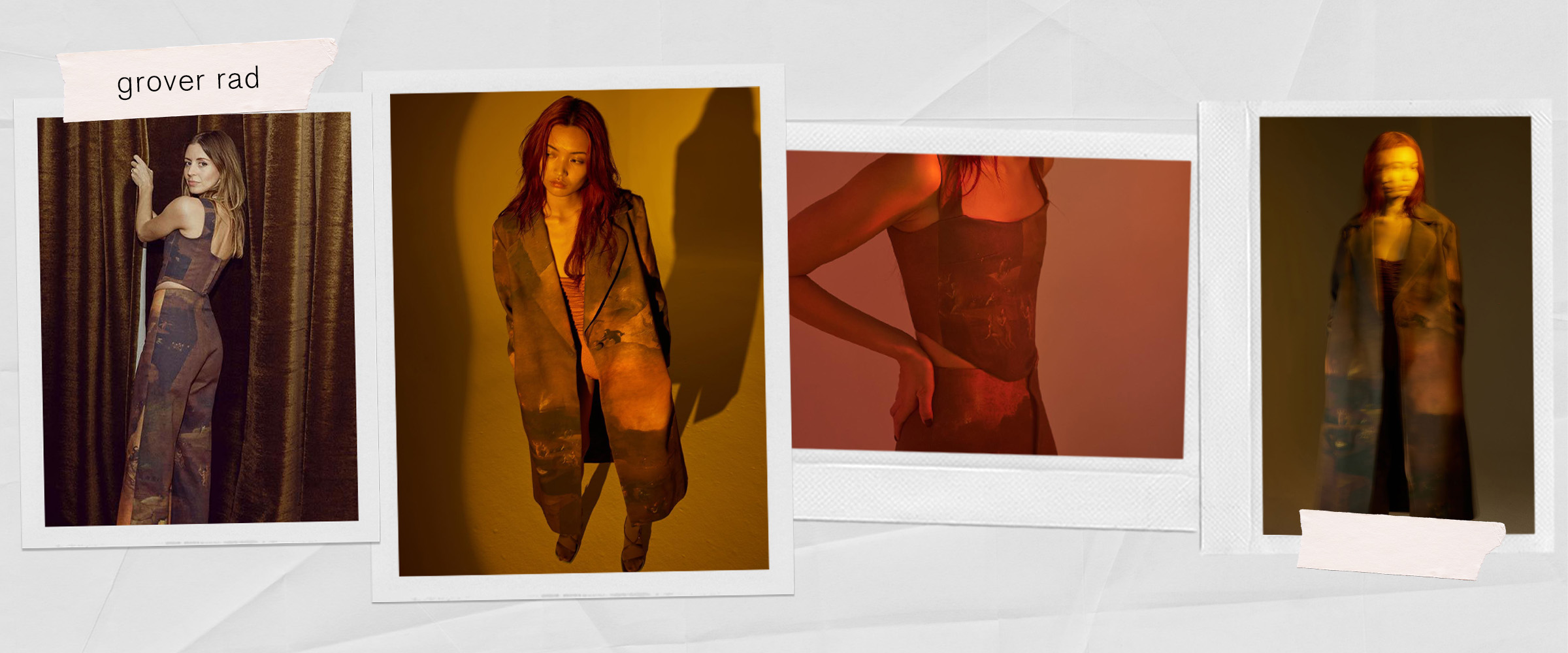
WHO: Lizzie Grover Rad, Founder and Creative Director of Grover Rad
For those who are unfamiliar with your work, how long have you been in the industry?
I spent years in the interior-design space until I decided to launch my namesake label in 2021.
How did you realize that you wanted to start your label?
I've always loved fashion and am an avid collector of vintage pieces. My style is more maximalist. I love to mix prints and textures, and I wouldn't say I like to purchase what is "trendy" at that moment. I am a risk taker in my wardrobe and want my clothes to stand for something. After a decade in interior design, I decided to start my clothing line because clothes are freer to design, and people tend to take more risks in their sartorial choices than in home-design ones.
It's no secret that there are so many brands out there, but for you, what did you feel was missing in the market before you started your label? What do you hope to bring to the industry?
These days, I think fashion is playing it a little too safe. Emerging designers are doing interesting things but, in my opinion, can be pretty unwearable. I've noticed a lack of individuality with trends, so I wanted to create something that gives people a very strong point of view. Everything we make has messaging and a story behind it, similar to my favorite designers from the '90s (Vivienne Westwood, Jean Paul Gautier) that had such strong POVs.
One thing that makes your label so special is each collection explores a theme through the usage of graphic prints. Why was it imperative to create clothing that could spark a conversation?
Nowadays with how much choice there is out there and the behemoth of the fast-fashion industry, there was no other option than to launch a brand that had meaningful messages around the designs. Every day, we are inundated with news from around the world and existential threats. What we choose to buy and wear should partake in these conversations.
You have spent years working in the interior design industry. What made you decide you wanted to pivot into fashion design? How have your collective experiences in the industry impacted how you approach every aspect of your business, from product design to marketing?
Much of my time in the interior design industry was spent at my tech company, which made interior design accessible and affordable through technology. The way I approach my new brand is more from the lens of my tech background, where agility and iteration are paramount. Instead of sitting on something and perfecting it for too long, I focus on getting something out there quickly to get feedback from our customers and go from there.
So often, consumers aren't always thinking about the story their clothing is telling. How do you hope your brand shifts how people think about and talk about clothing?
We can't ignore the environmental toll the clothing industry has taken. As we adjust our consumption patterns, I hope people will start buying things that have more meaning and individuality. Less buying for trends that we discard later and more buying as a collector.
The past few years have been tumultuous for many designers—from dealing with supply-chain issues to the pandemic. Did the instability of the market ever deter you from starting the label? And how, if at all, has it impacted your approach to your work?
The pandemic made me want to start my own brand. I had a lot of space to think and let the creative juices flow in lockdown. I found that slowing down was exactly what I needed. [It] didn't hurt that I was doing a whole lot of online shopping and saw a gap in the contemporary market for what I'm drawn to—well-made, heavily printed, meaningful pieces.
You just released your second collection—can you tell us a little bit about it? Where did you draw inspiration from? How long did it take to develop it?
Collection 002 is titled Billionaires in Space—Make Mars a Matriarchy and was inspired by our current race to Mars. This idea is that our wealthiest people (men) are more interested in exploring new frontiers than fixing the dire problems we are facing on Earth. That train of thought and the research for this collection took me to topics like animal rights (we've tested a lot of space travel on animals), conspiracy theories around alien life, and what a new world could look like if it weren't led by white men.
Lastly, though the brand is still new, how do you hope it will change the industry? What do you envision for the future of the brand?
I am not interested in changing the industry on a global scale. I am laser-focused on making low-volume, low-environmental-impact, high-quality pieces that are interesting and spark conversation. I am making clothes that are meaningful to the wearer above all else.
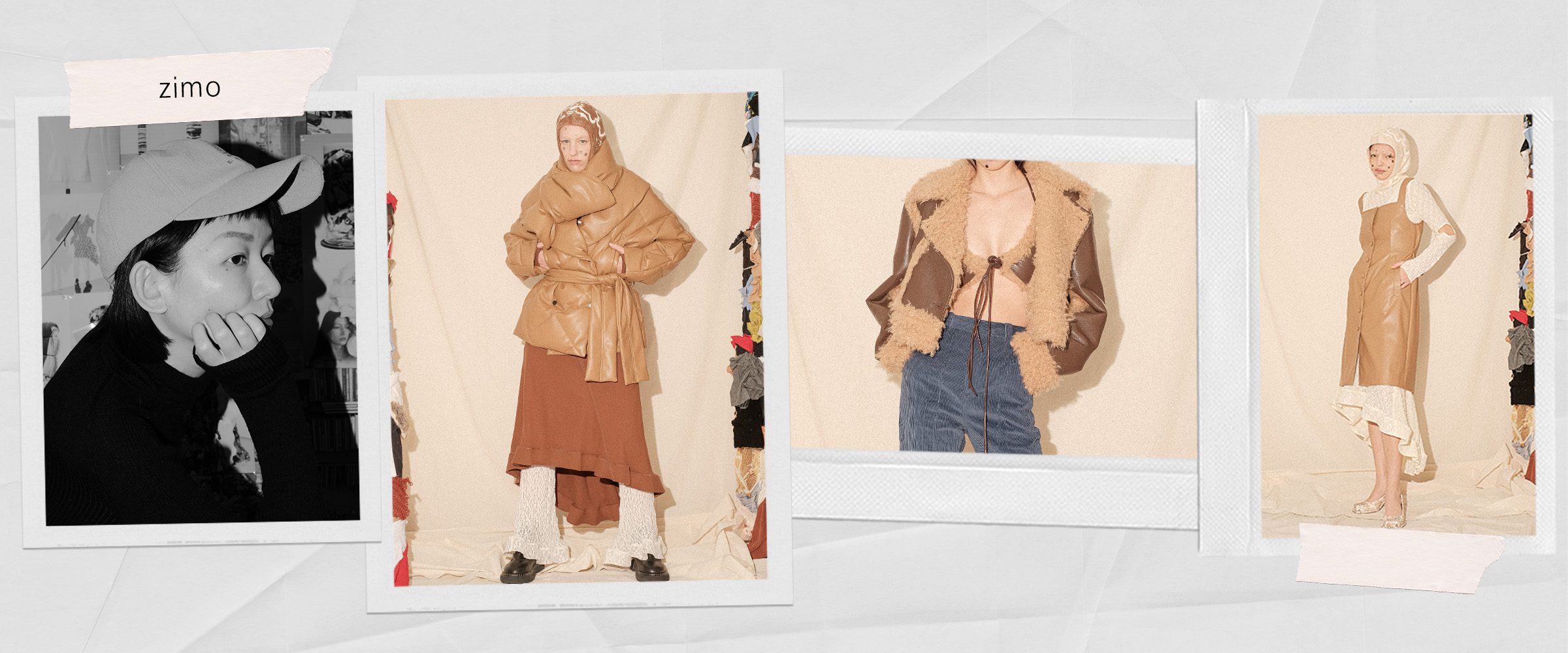
WHO: Zimo Yan, Owner and Creative Director of Zimo
For those who are unfamiliar with your work, how long have you been in the fashion industry?
I've been in the industry for well over five years. I first attended the Savannah College of Art and Design and graduated in 2017. I then worked for Proenza Schouler, Prabal Gurung, and 3.1 Phillip Lim.
How did you realize that you wanted to start your label?
After working in New York and Shanghai, I finally decided in 2021 that I wanted to express my vision of what fashion could be. I've always wanted to create my brand, but I do understand that I'm still learning about the industry, how it works, and what it takes to make it.
It's no secret that there are so many brands out there, but for you, what did you feel was missing in the market before you started your label? What do you hope to bring to the industry?
In my opinion, most brands follow trends. Only a few focus on varnished culture, especially Asian culture. During the past decades, the changing pace in China was too fast for my generation to dissolve. The conflict between the West and East generated lots of sparks, but many of them were washed out by the major light, and very few people got to see the beauty of these small and short-lasting sparks. I want to tell those stories through my designs to remind people about the "lost sparks."
One thing that makes Zimo so special is that it champions upcycling. For you, why was it imperative to create collections using deadstock and upcycled fabrics?
The deadstock is exactly what I mean about the "sparks that were washed out by the major light." Many of them have their beauty but just have not been put in the right place or just labeled "outdated" by the market in a specific period—like the Shanghai towel store I visited in 2020 that had been selling the towels that my grandma liked to use for decades. As an artist and fashion designer, I love to use them to create new garments in a more creative and modern way so that the heritage, memory, and life of the deadstock can be extended in multiple ways. Besides, I do love hearing our client say, "My grandma has worn something like this before!" When they are looking at our garments, it's like a conversation across time.
In choosing to produce with upcycled materials, did you run into any initial challenges? And how did you overcome them?
Yes, it's hard to control the quantities of deadstock for production. And sometimes, they are different, so we need to make every piece unique and in limited quantities.
You have spent years working in the fashion industry. How have your collective experiences in the industry impacted how you approached every aspect of your business, from product design to marketing?
I would say the most important thing I learned during work is the balancing between conceptual and commercial when doing the design work. We love seeing different creative looks, but not everyone is really into it and feels like they could fit them well. Therefore, I always believe that the quality and silhouette are as important as the concept.
What's one thing you think many consumers may not know about the fashion industry that you're hoping to change through Zimo?
"Outdated" elements can also be fashionable, and they can also touch people in ways that light a spark of inspiration in them.
The past few years have been tumultuous for many designers—from dealing with supply-chain issues to the pandemic. Did the instability of the market ever deter you from starting the label? And how, if at all, has it impacted your approach to your work?
The pandemic was an unexpected factor when I decided to create my brand, but it's also pushed me because I found the pandemic sped up certain industries/cultures/ heritage disappearing. Hence, I felt compelled to capture those through my work. While COVID-19 lockdowns did present a lot of challenges, it did give me more time to think of a clearer vision of what Zimo could be.
You just released your fall/winter 2023 collection—can you tell us a little about it? Where did you draw inspiration from? How long did it take to develop it?
It took about three months to develop from concept, but the F/W 23 collection is called Hoarderism, a documentary about hoarders from the '90s. My grandparents were always hoarding things, and the same happens for many communities that have experienced food and material shortages. During my research, I found that every hoarder has some reason to hoard things, but the common takeaway is that the images from their hoarding place are so impactful. That's why I wanted to document their stories and convert them into inspiration for the collection.
Lastly, though the brand is still new, how do you hope it will change the industry? What do you envision for the future of the brand?
It's hard to say "change the industry" now, but I hope Zimo could become the reminder that reminds people of forgotten cultures and heritages. I hope each season is a documentary to preserve the disappearing Asian subculture. Many years later, when people come back to see the brand picture, it will emulate a complete documentary film that's full of inspiring stories and creative sparks and potentially make more people enjoy the beauty of different cultures without prejudice.

WHO: Nayon Kim, Director of Nayon
For those who are unfamiliar with your work, how long have you been in the industry?
I've been in the industry since 2016 as a stylist in Seoul, South Korea. Then, I moved to New York to study fashion design at Parsons School of Design. Since graduating, I've been freelancing and doing the visuals for Psy's idol group TNX.
How did you come to realize that you wanted to start your label?
I always wanted to express my vision through my own label, and now looked like a good time to start.
It's no secret that there are so many brands out there, but for you, what did you feel was missing in the market before you started your label? What do you hope to bring to the industry?
I have been thinking about this question for a long time and realized what was missing is timeless, quality garments that do not rely on sales or being viral on social media. I want to bring nobility to garments.
One thing that makes your label so special is each collection is gender-neutral. Why was it imperative to create clothing that everyone could wear?
I don't believe that clothing should be gendered. People should choose what they want to wear. It is like music—people can feel differently about an artist or a song, and there is no right or wrong to it.
You have spent your early years working as a stylist for Blackpink. What made you decide you wanted to pivot into fashion design? How have your collective experiences in the industry impacted how you approach every aspect of your business, from product design to marketing?
My goal was to always work as a fashion designer. Starting out styling with Blackpink was a fortunate opportunity that came to me before starting design school and helped me learn about the fashion industry.
You were awarded the CFDA Design Scholar Award in 2021—what was that moment like for you? And how has it impacted your brand?
It was a moment that gave me the confidence to start my own brand. I was having some hard times, and the CFDA Awards opportunity gave me a chance to believe in myself and start fresh.
How do you hope your brand shifts how the industry defines menswear and womenswear?
I hope that Nayon can give people flexible viewpoints and visuals without emphasizing gender.
The past few years have been tumultuous for many designers—from dealing with supply-chain issues to the pandemic. Did the instability of the market ever deter you from starting the label? And how, if at all, has it impacted your approach to your work?
It is hard to start something small without access to the materials or help. As someone creating something new, it was hard to afford great-quality pieces without the funding to back producing them.
You just released your fall/winter 2023 collection—can you tell us a little about it? Where did you draw inspiration from? How long did it take to develop it?
Brutalism has been a big inspiration, and the collection merges that design concept with my thoughts about this generation. For this season, I had a month, which is very little time.
Lastly, though the brand is still new, how do you hope it will change the industry? What do you envision for the future of the brand?
I would like to show that it is possible to build a creative house without following the trends. I want the brand to contribute to the culture, not just the fashion industry.
Next Up, We're Fashion-Week Veterans—This Is What Will Matter in 6 Months
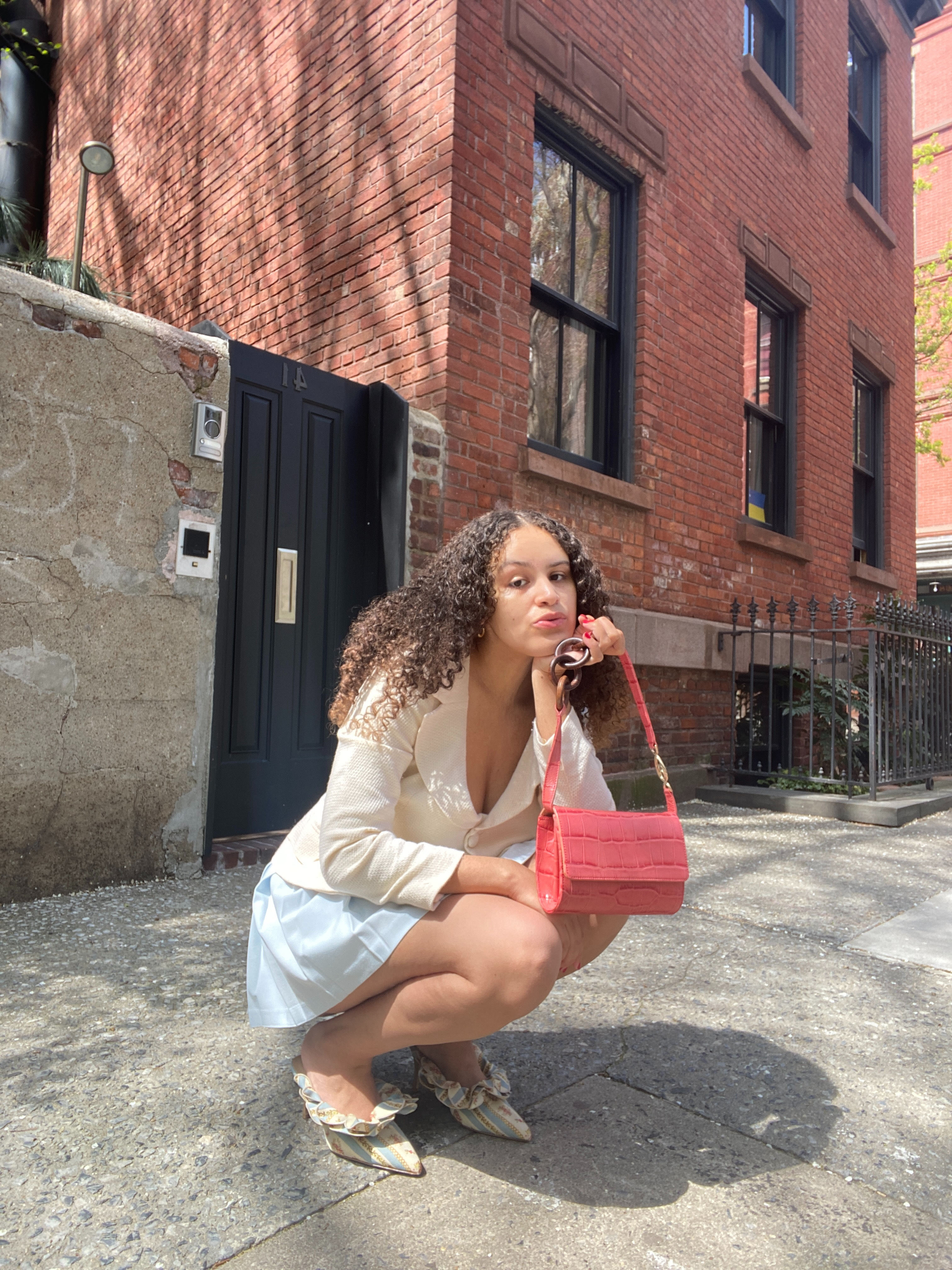
Jasmine Fox-Suliaman is a freelance writer and editor living in New York City. What began as a pastime (blogging on Tumblr) transformed into a lifelong passion for unveiling the connection between fashion and culture on the internet and in real life. Over the last decade, she's melded her extensive edit and social background to various on-staff positions at Who What Wear, MyDomaine, and Byrdie. More recently, she’s become a freelance contributor to other publications including Vogue, Editorialist, and The Cut. Off the clock, you can find her clutching her cell phone as she's constantly scrolling through TikTok and The RealReal, in search of the next cool thing.
-
 Alexa Chung's World: Her Best-Selling Madewell Collab, Personal Style Icons, and Spiciest Fashion Takes
Alexa Chung's World: Her Best-Selling Madewell Collab, Personal Style Icons, and Spiciest Fashion TakesPlus, what she's reading and listening to and her favorite spots in London.
-
 In a World of Shrinking Size Inclusivity, Eloquii Stands Larger Than Ever
In a World of Shrinking Size Inclusivity, Eloquii Stands Larger Than EverWelcome to the Eloquiissance.
-
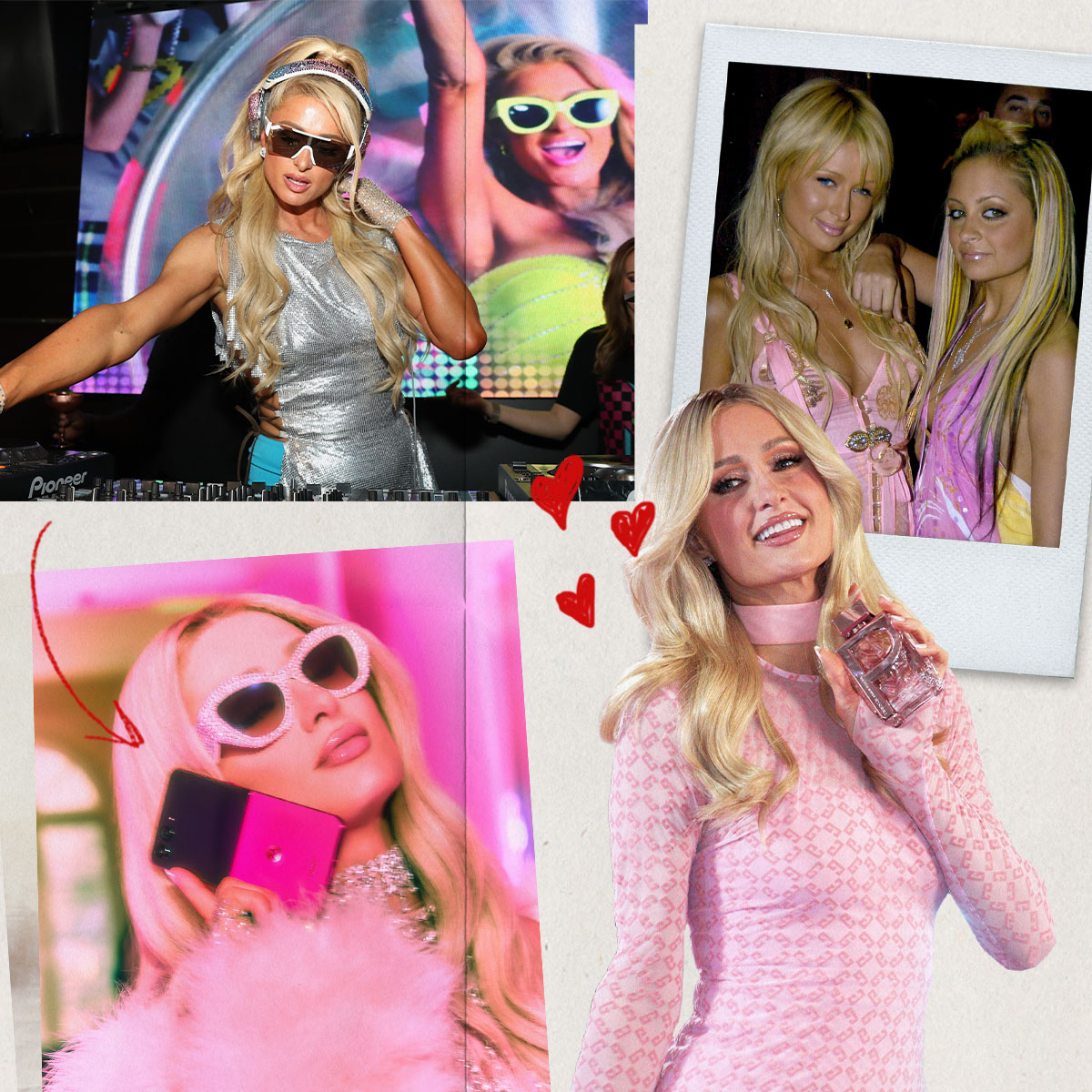 Paris Hilton's World: Her Pink Motorola Razr, Favorite Y2K Looks, and What 11:11 Media Means to Her
Paris Hilton's World: Her Pink Motorola Razr, Favorite Y2K Looks, and What 11:11 Media Means to HerA glimpse into the life of this savvy entrepreneur.
-
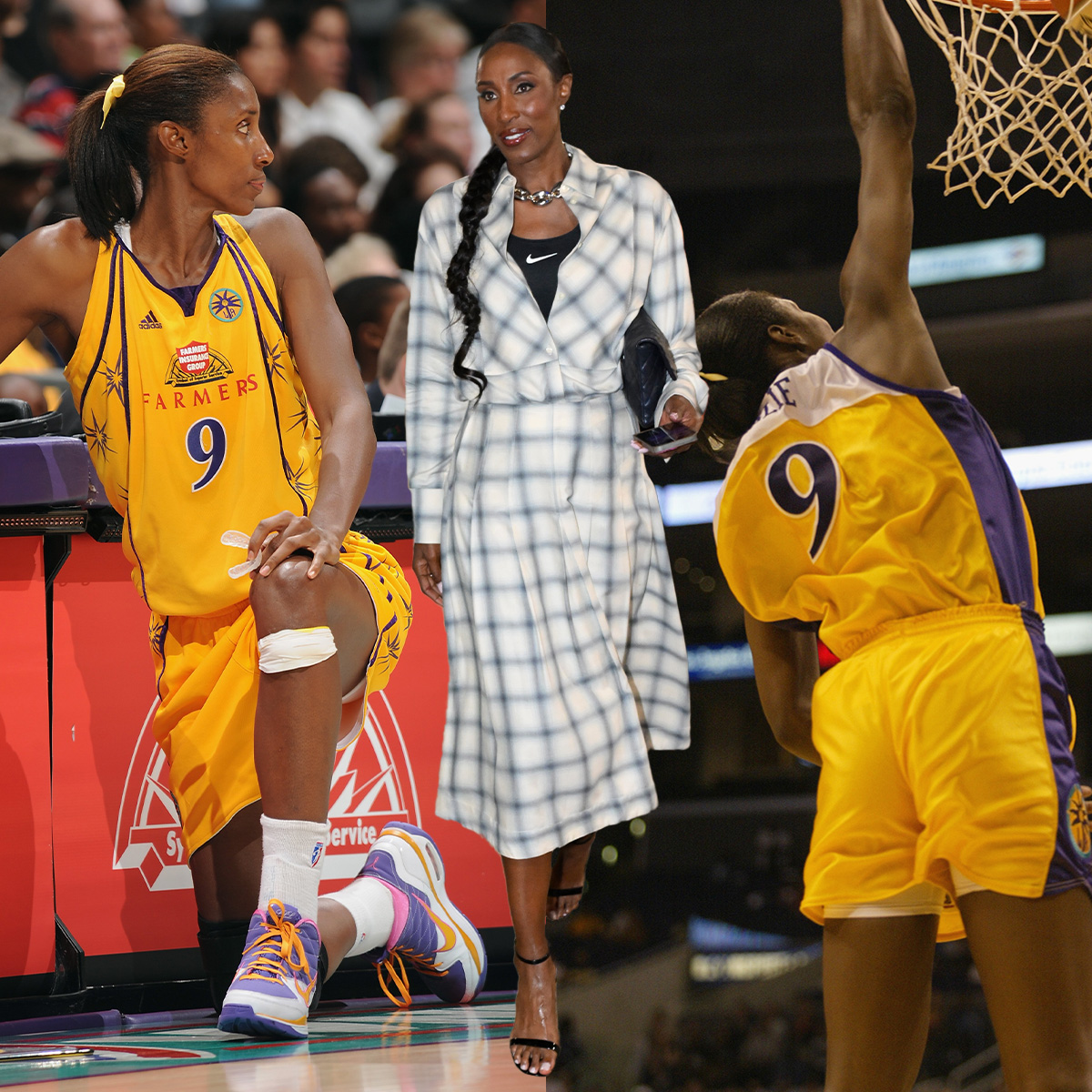 Lisa Leslie Is Still an All-WNBA First Team Dresser
Lisa Leslie Is Still an All-WNBA First Team DresserI sat down with the three-time MVP at Café Kallmeyer, an event hosted by Kallmeyer and Nike during the 2025 WNBA All-Star weekend.
-
 From Milan to Chișinău: Meet the 8 Designers That Make Up Fashion's New Guard in 2025
From Milan to Chișinău: Meet the 8 Designers That Make Up Fashion's New Guard in 2025We spoke with some of the industry's rising stars from around the world.
-
 Prepare to See Rickea Jackson at a Lot More Than Just WNBA Games
Prepare to See Rickea Jackson at a Lot More Than Just WNBA GamesFashion girl loading.
-
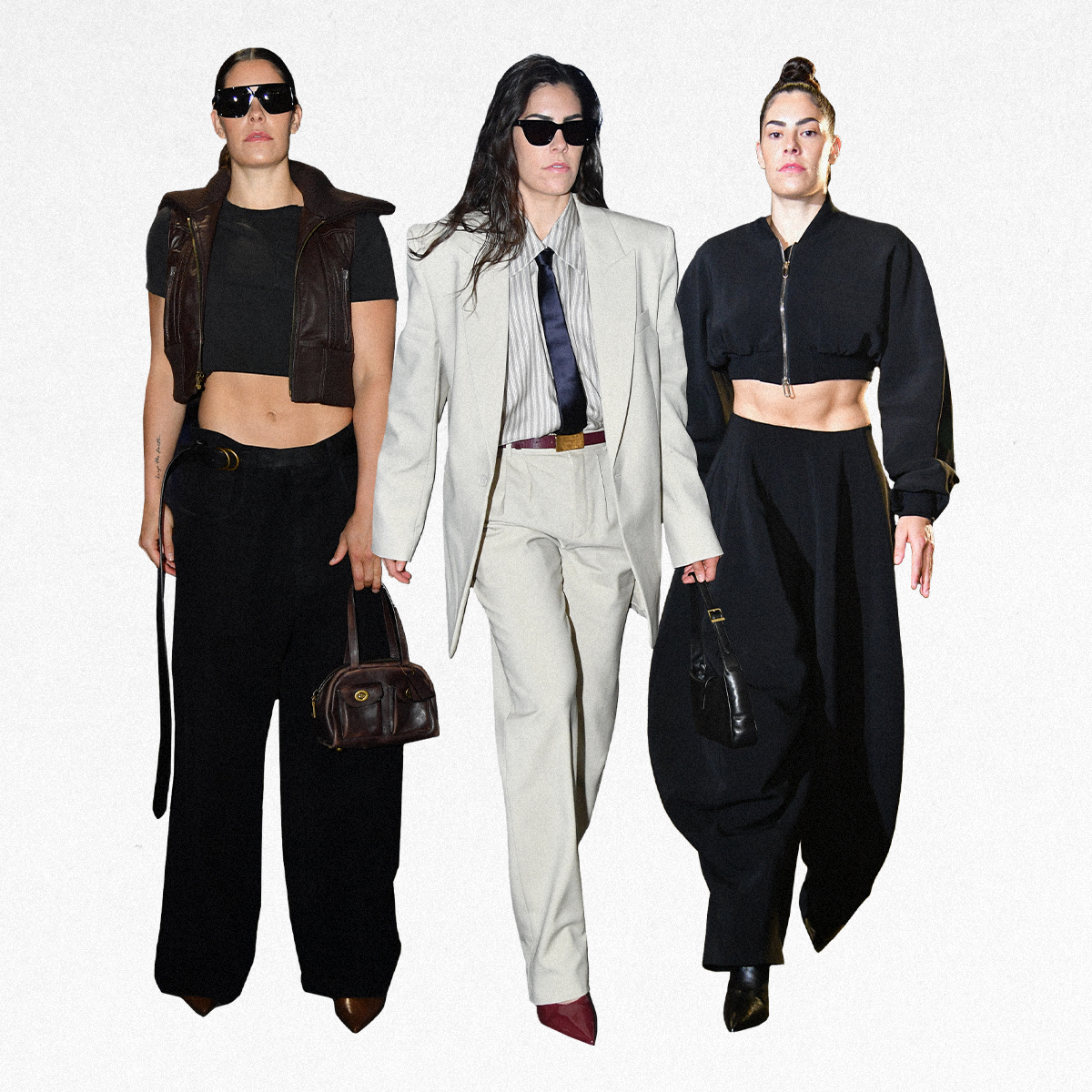 Styling Royalty Has Entered the WNBA Tunnel
Styling Royalty Has Entered the WNBA TunnelIn conversation with Kelsey Plum's new stylist, Karla Welch.
-
 Go Sports Is Back, Just In Time For WNBA All-Star Weekend
Go Sports Is Back, Just In Time For WNBA All-Star WeekendHere's everything you need to know.
